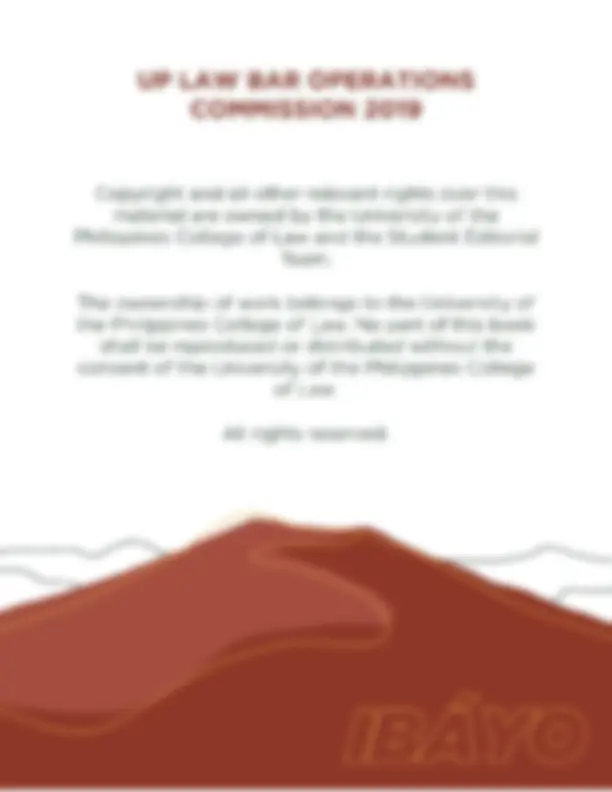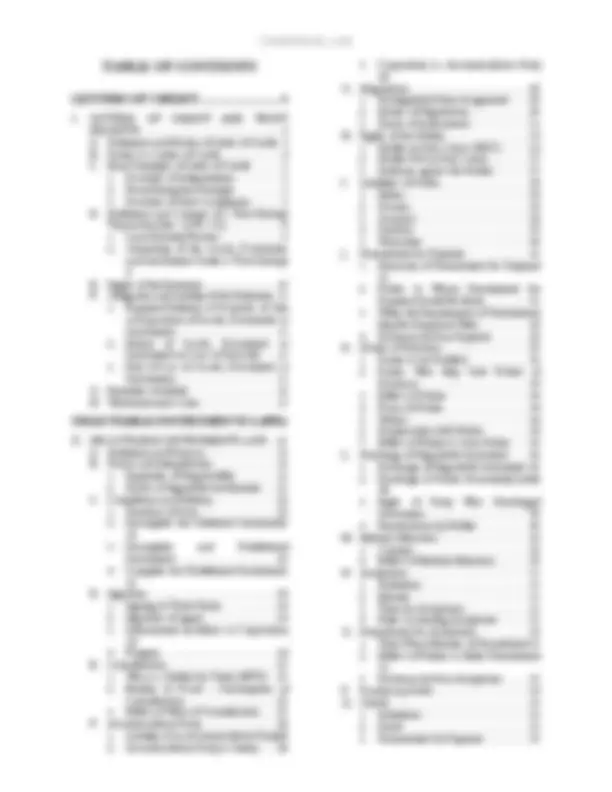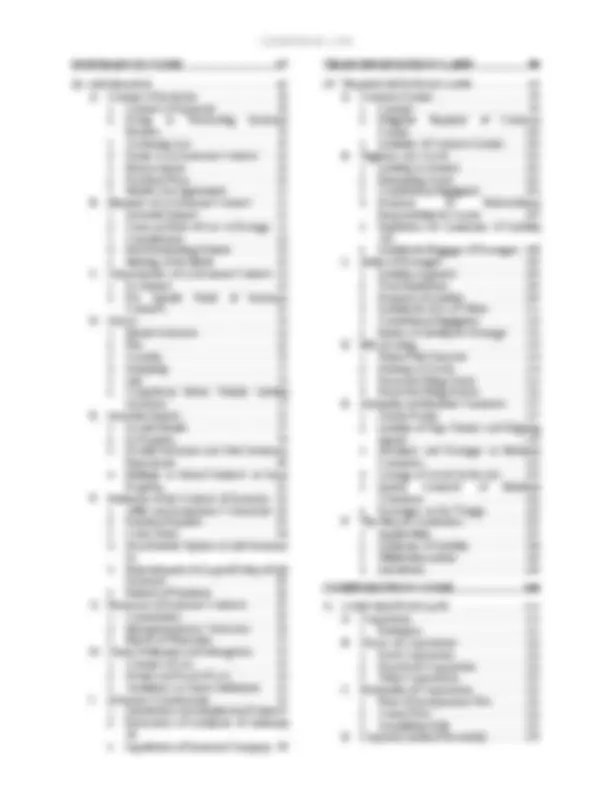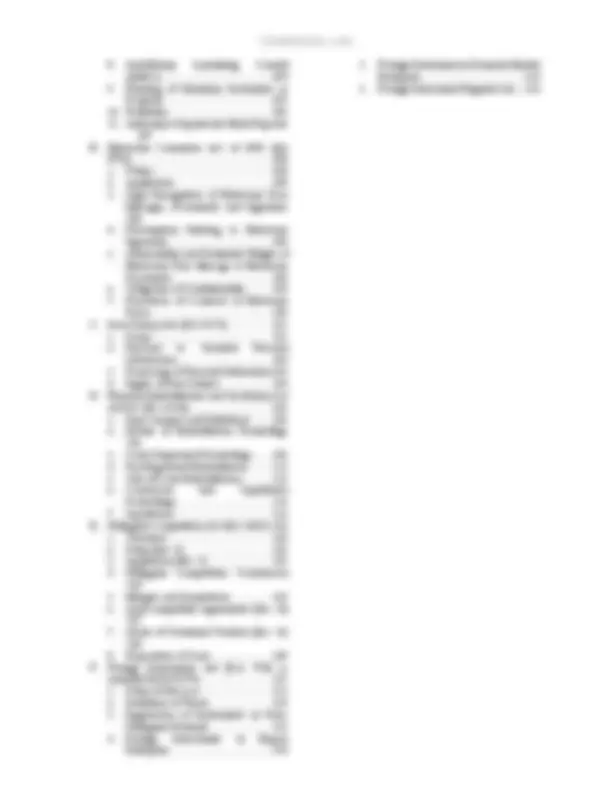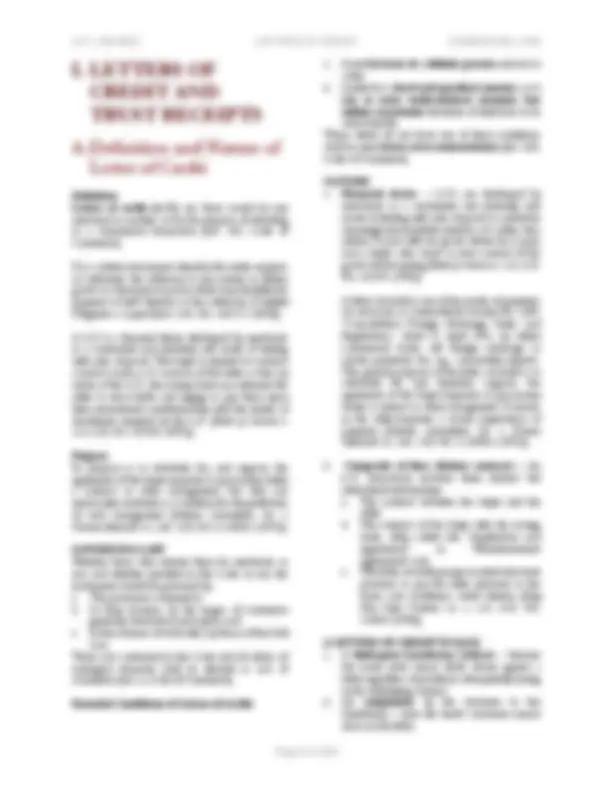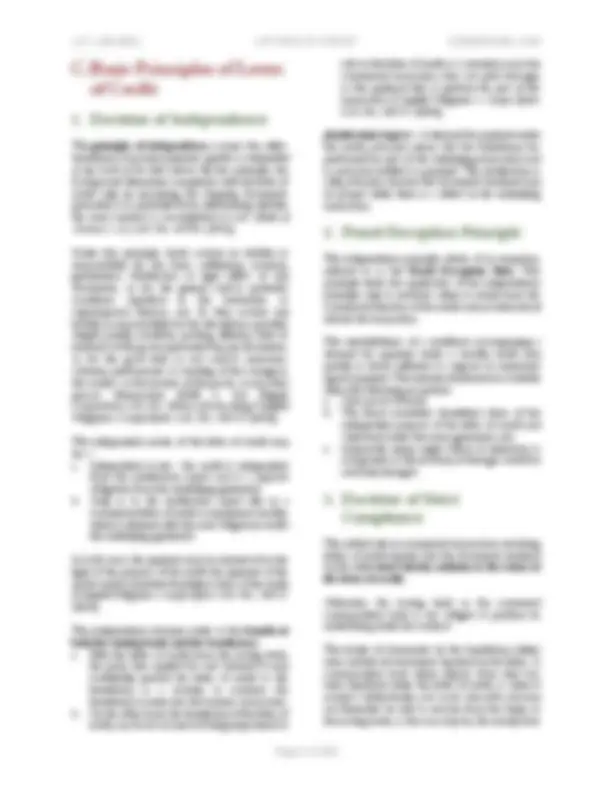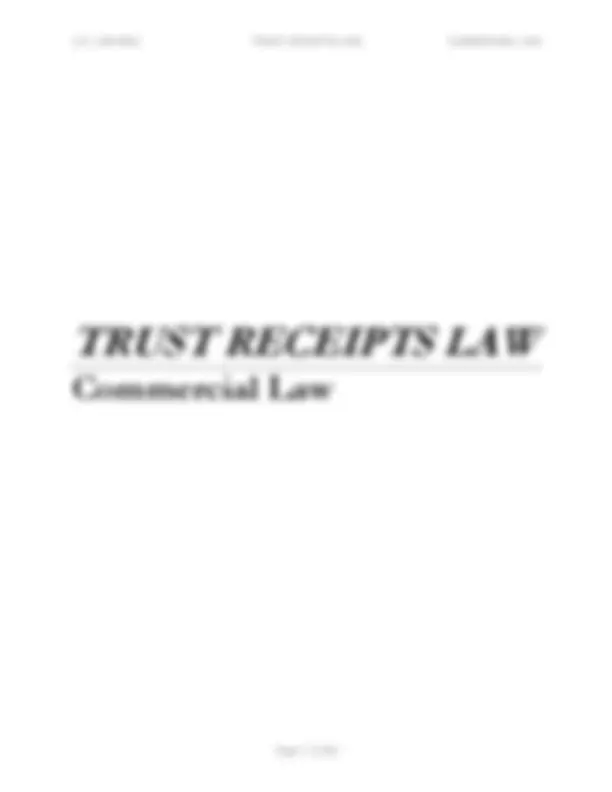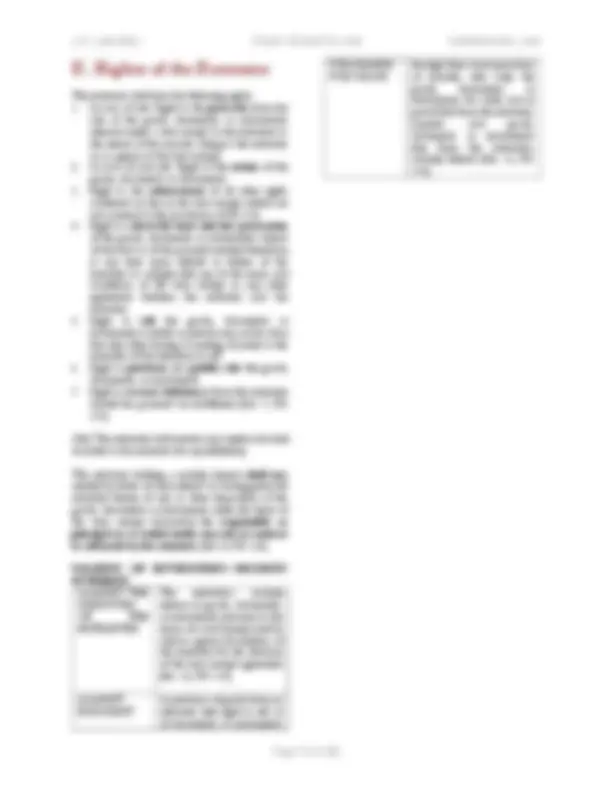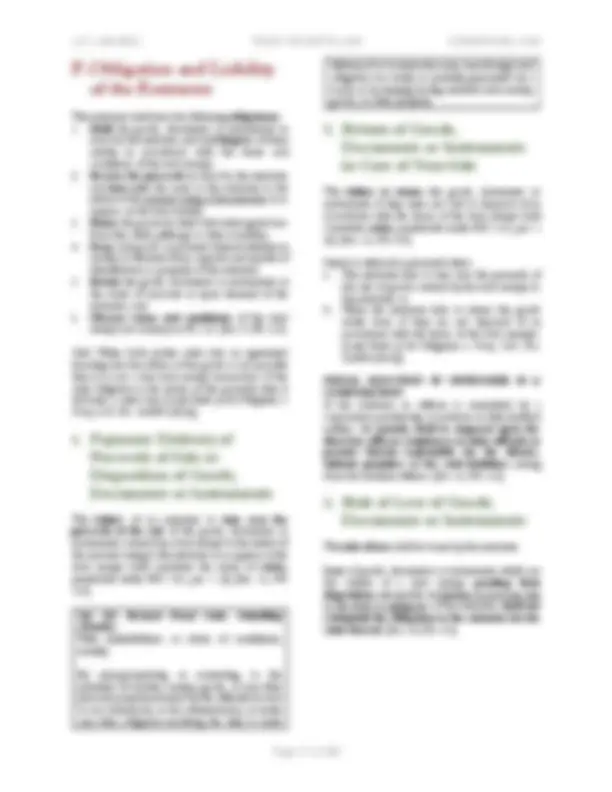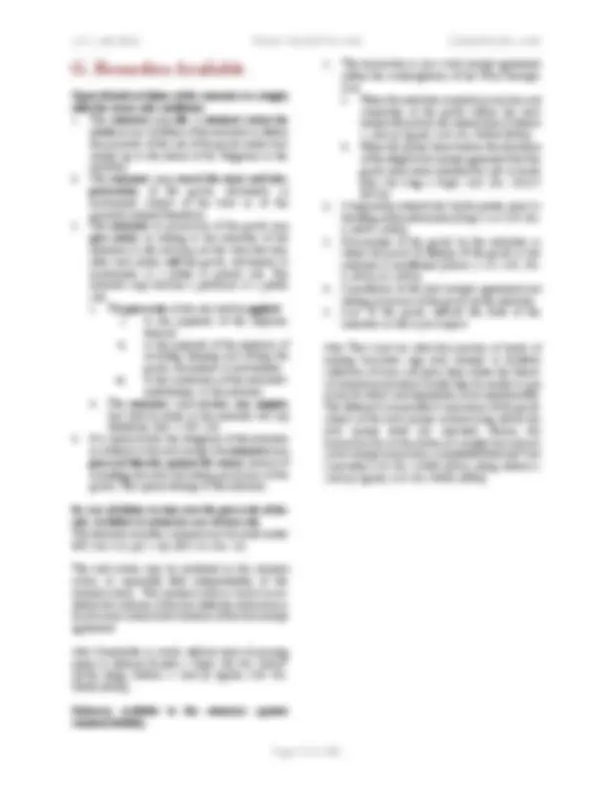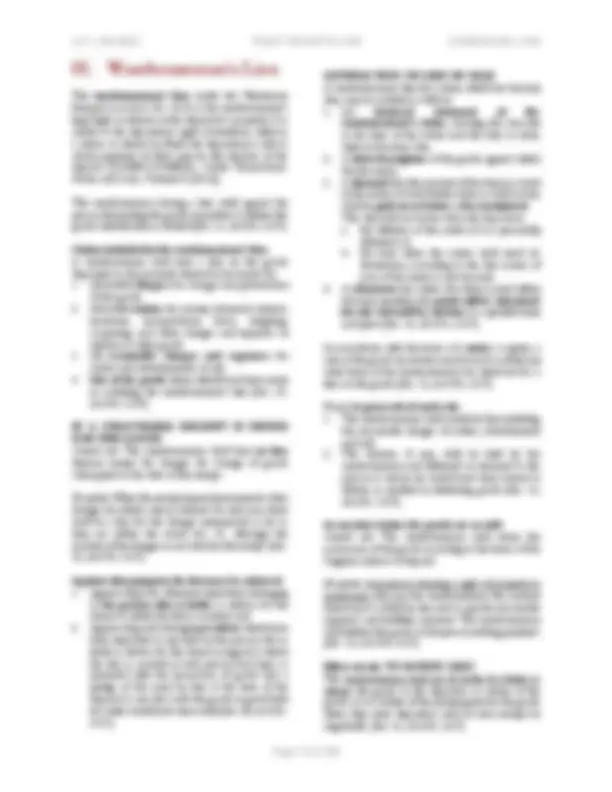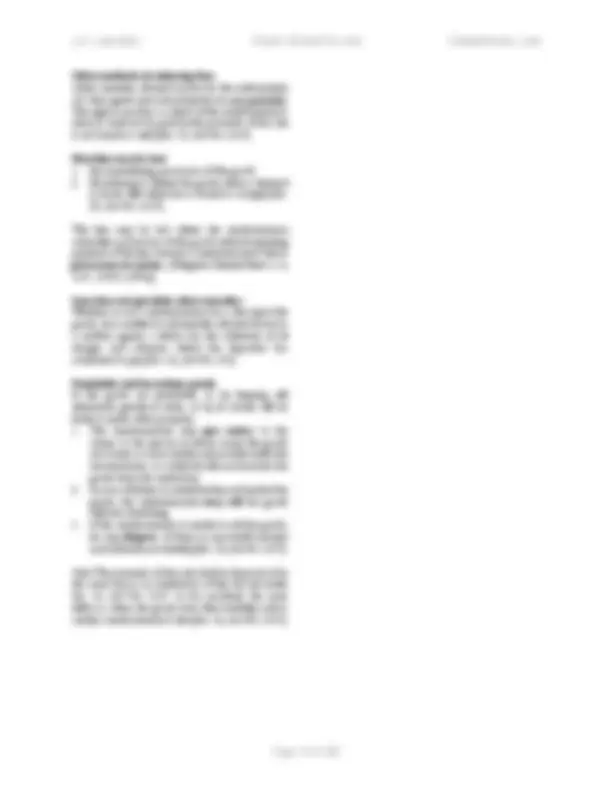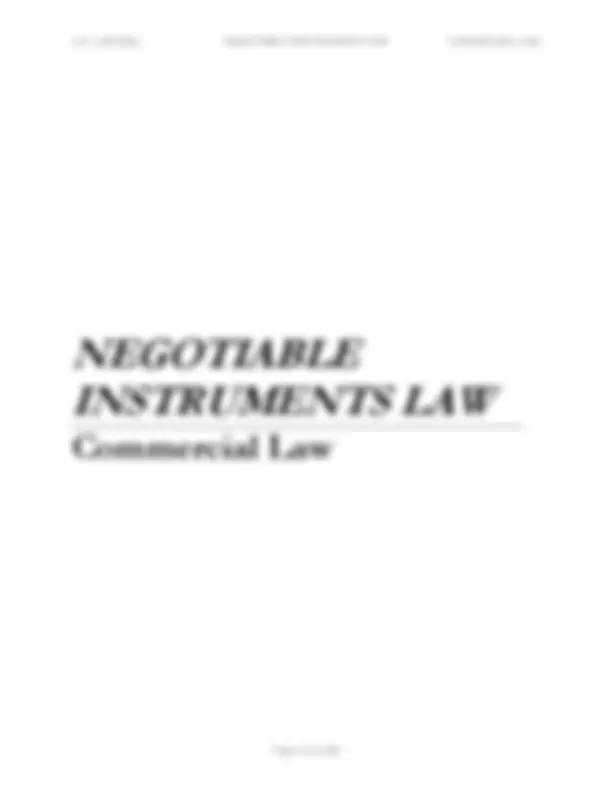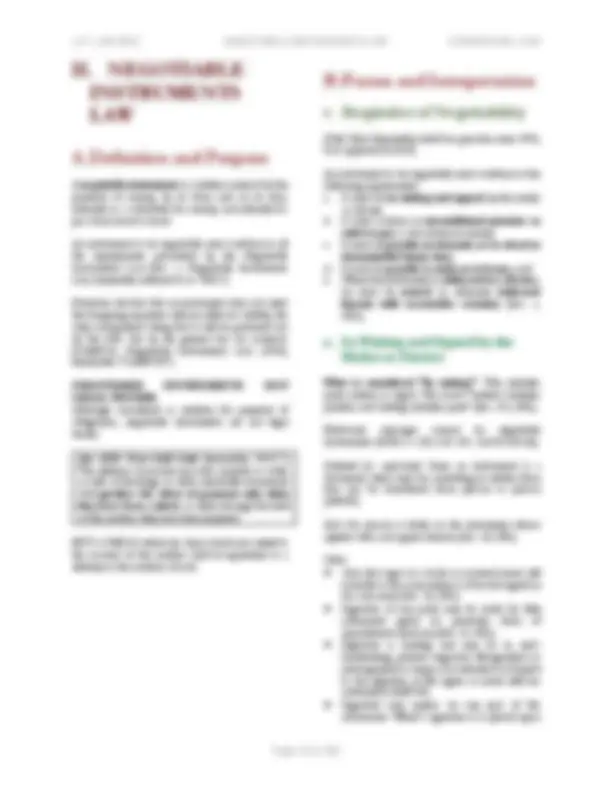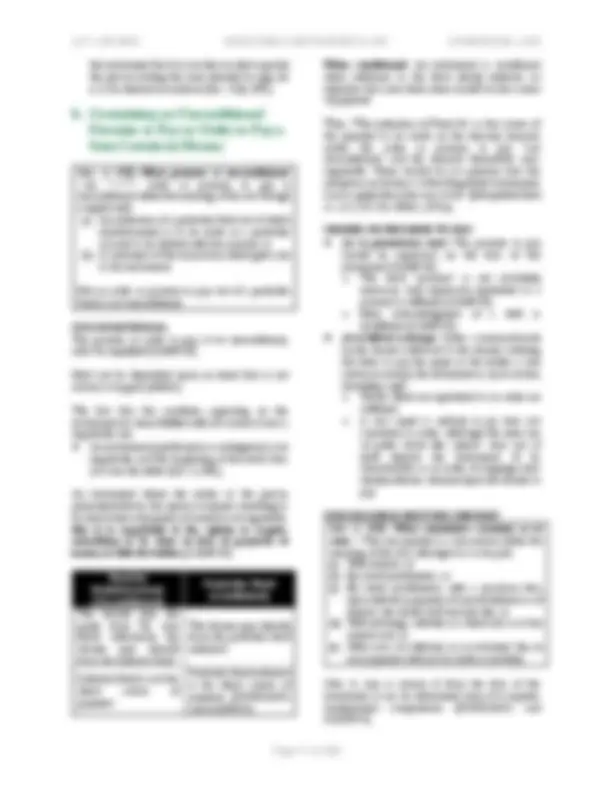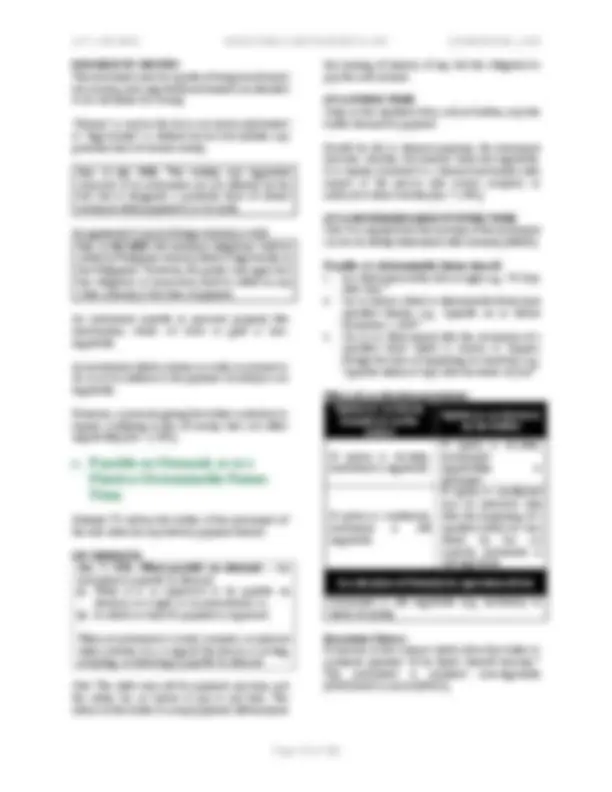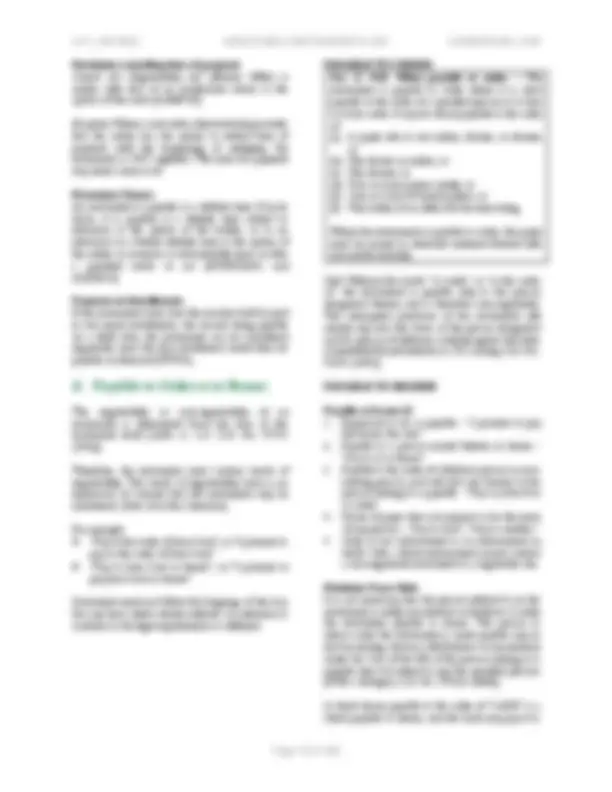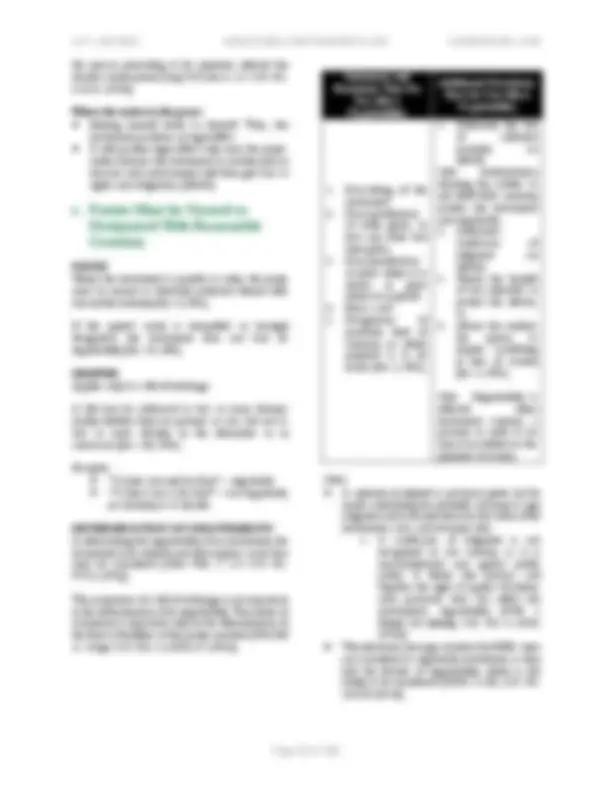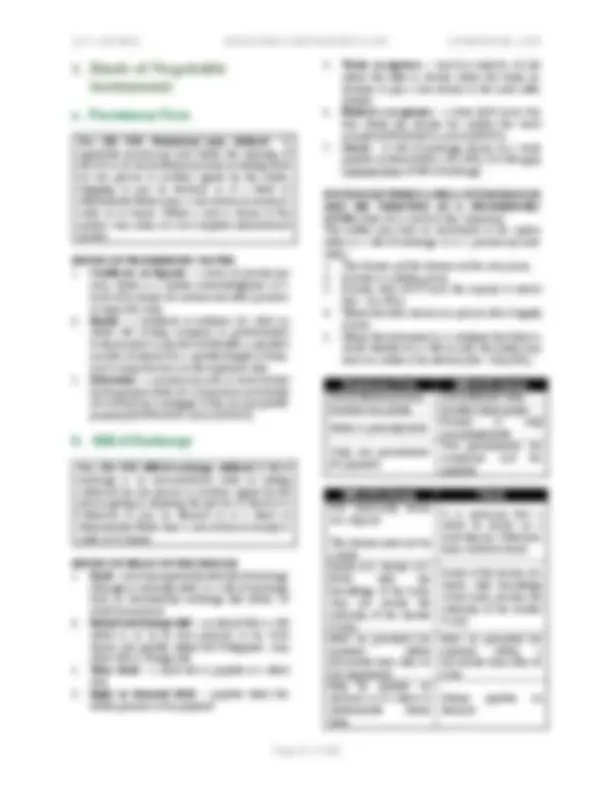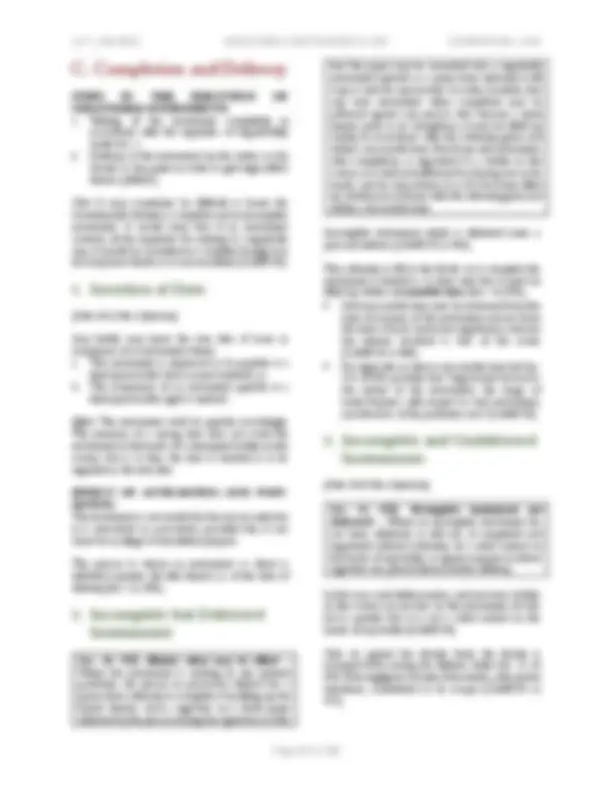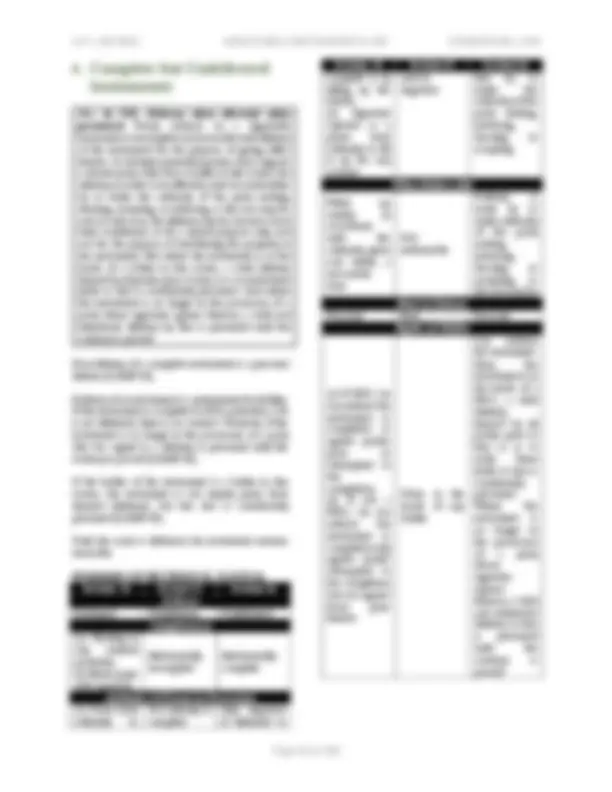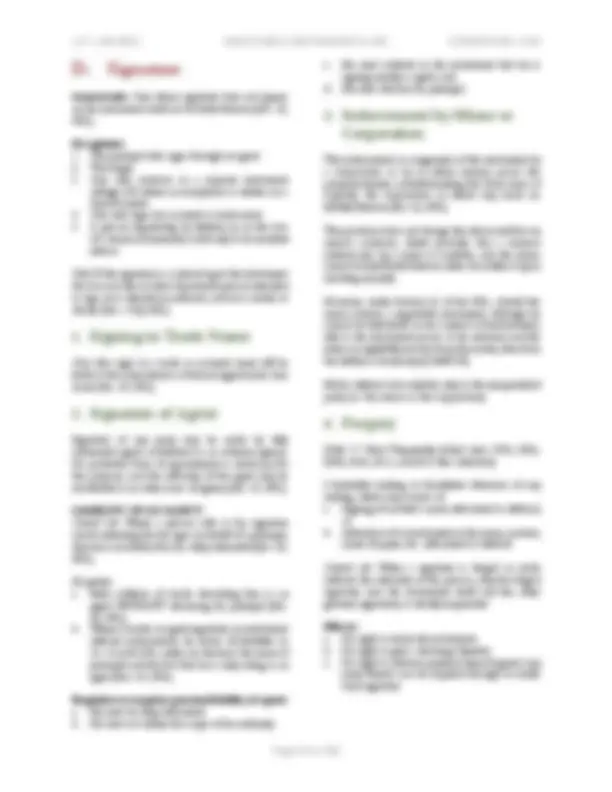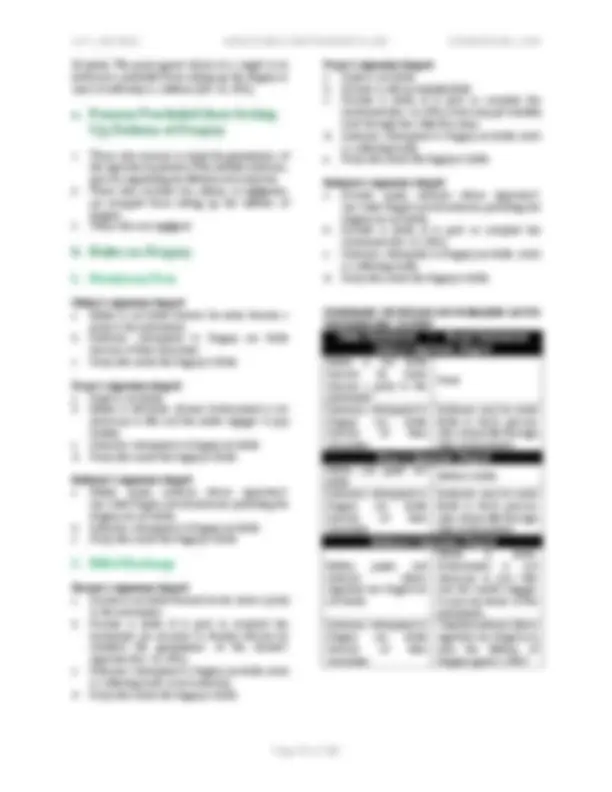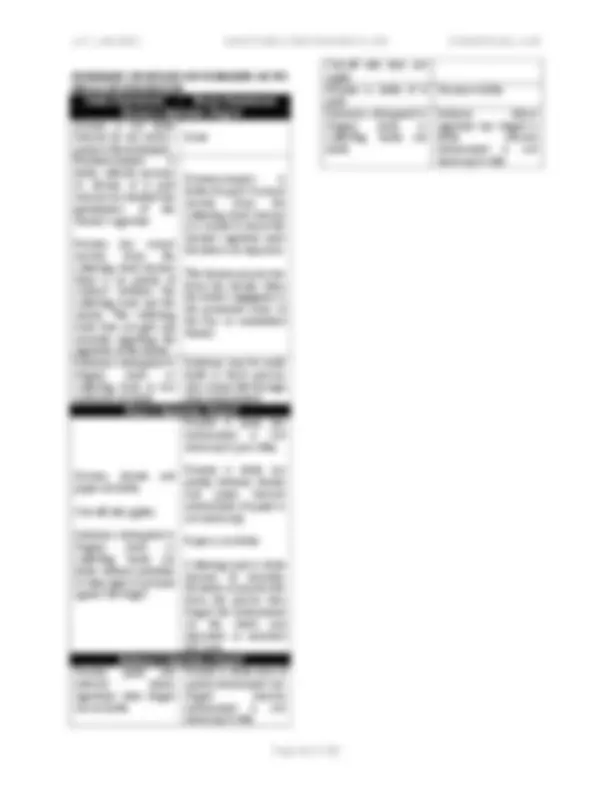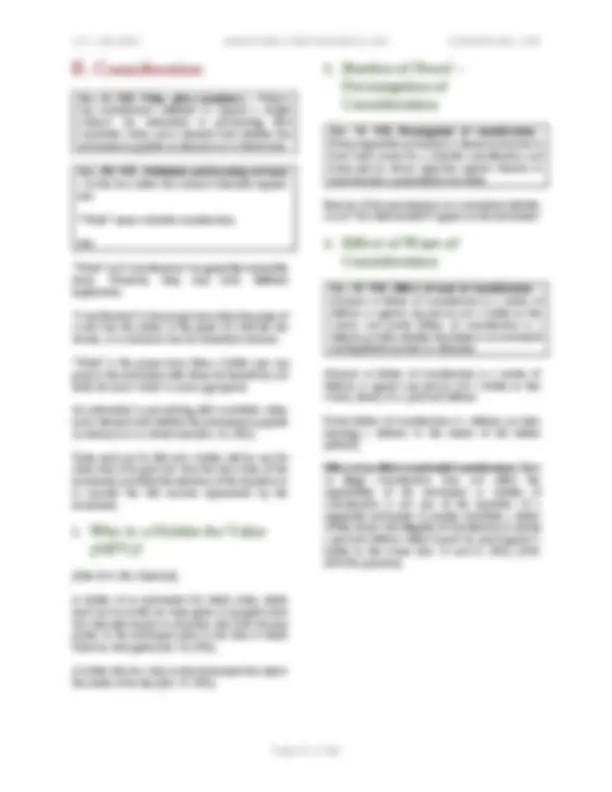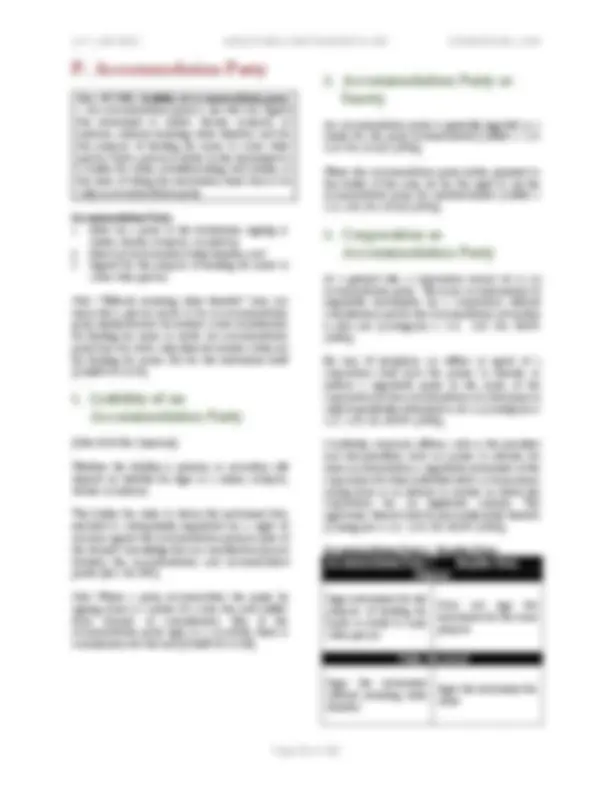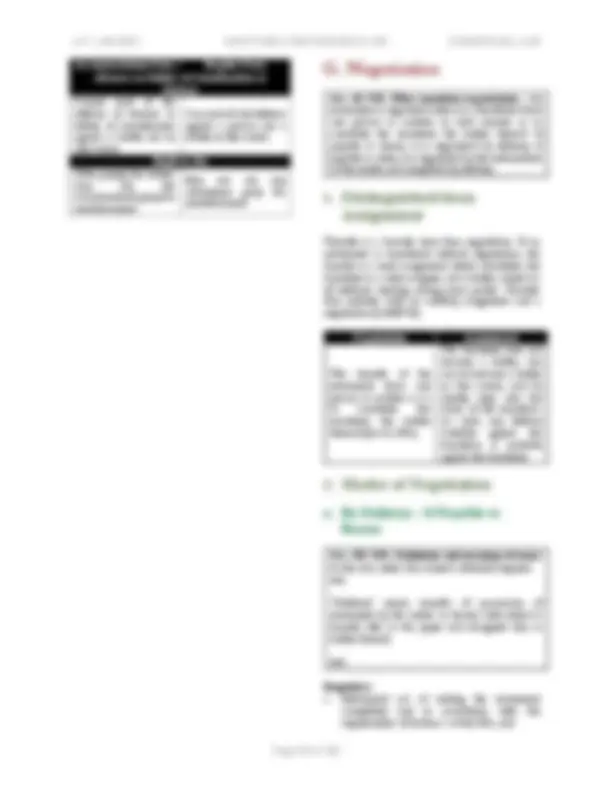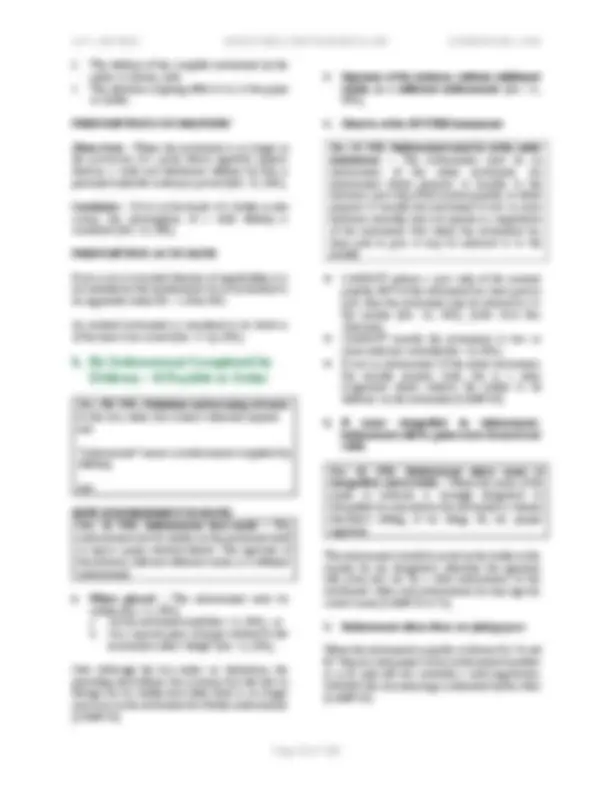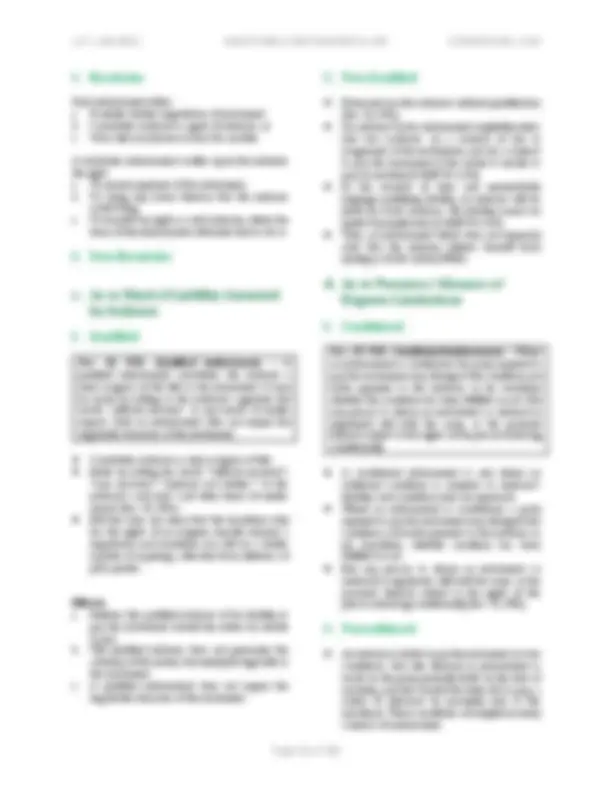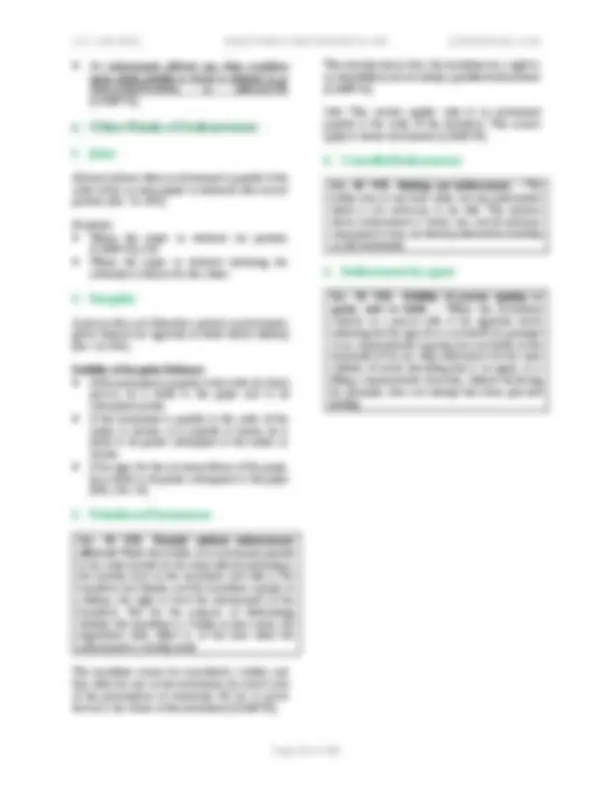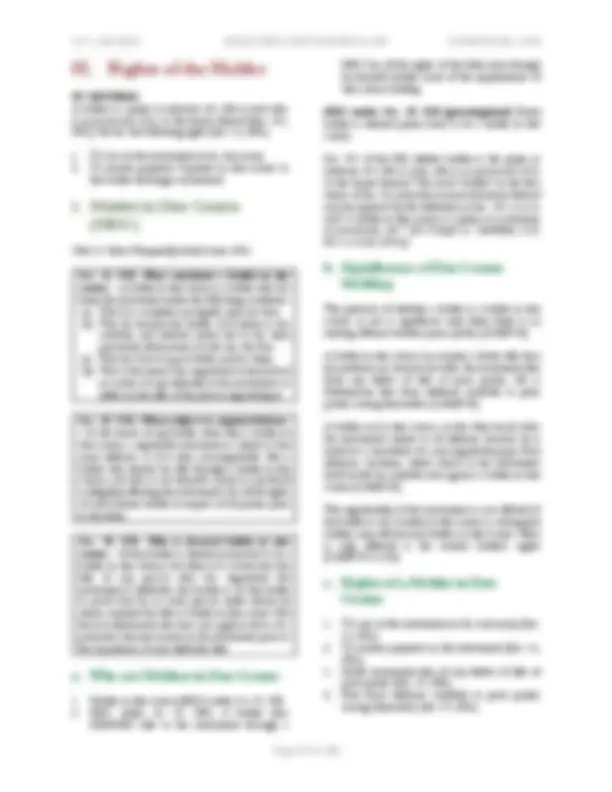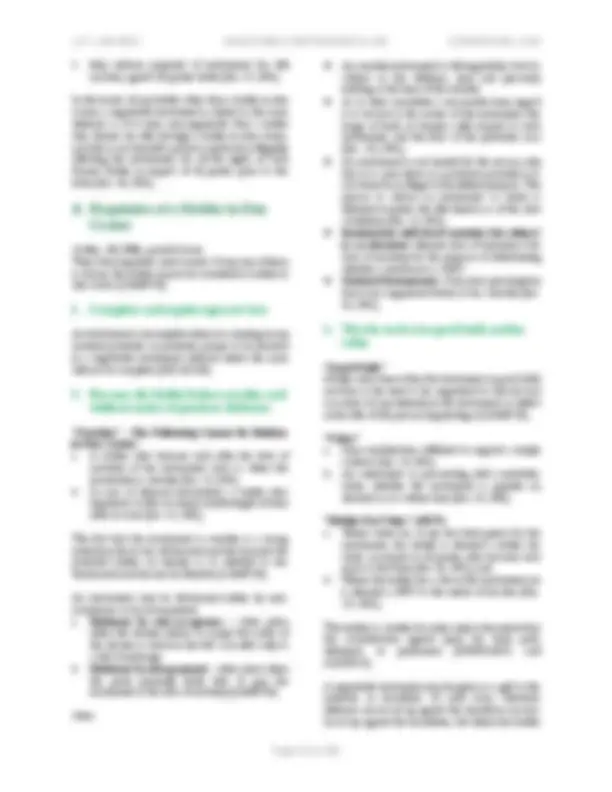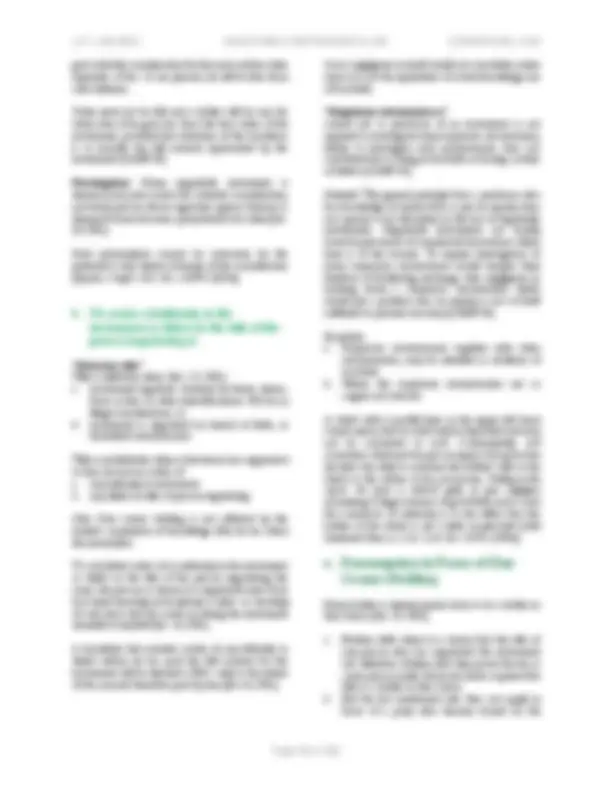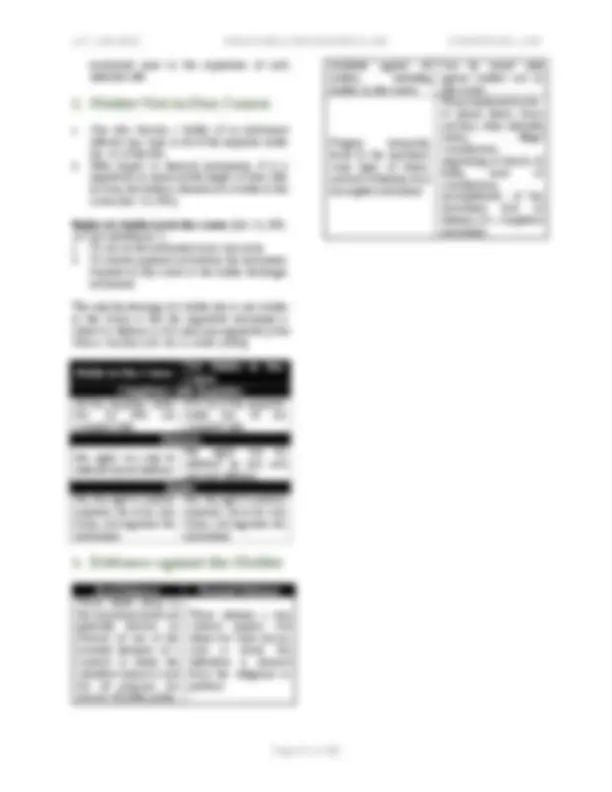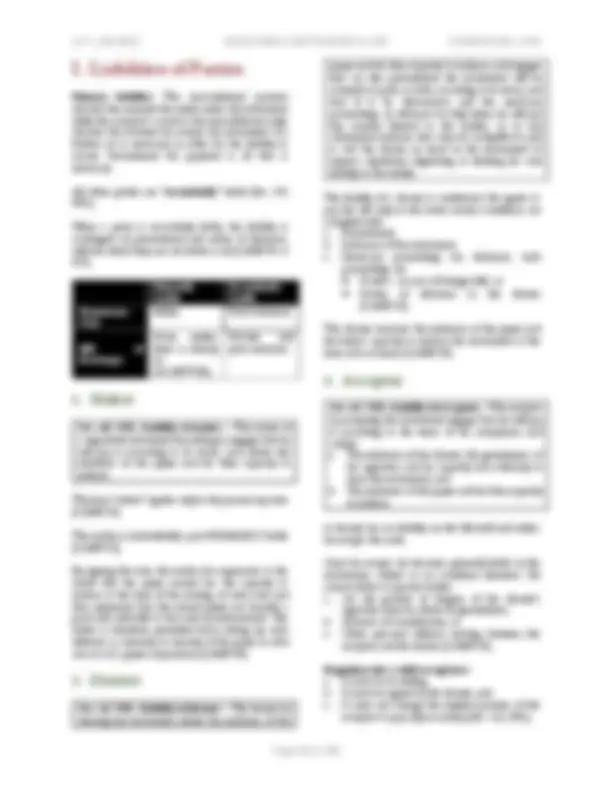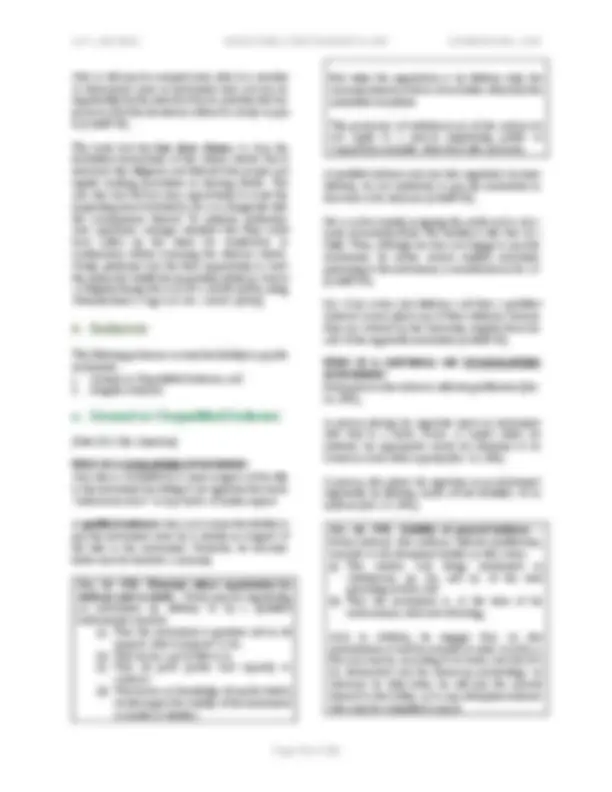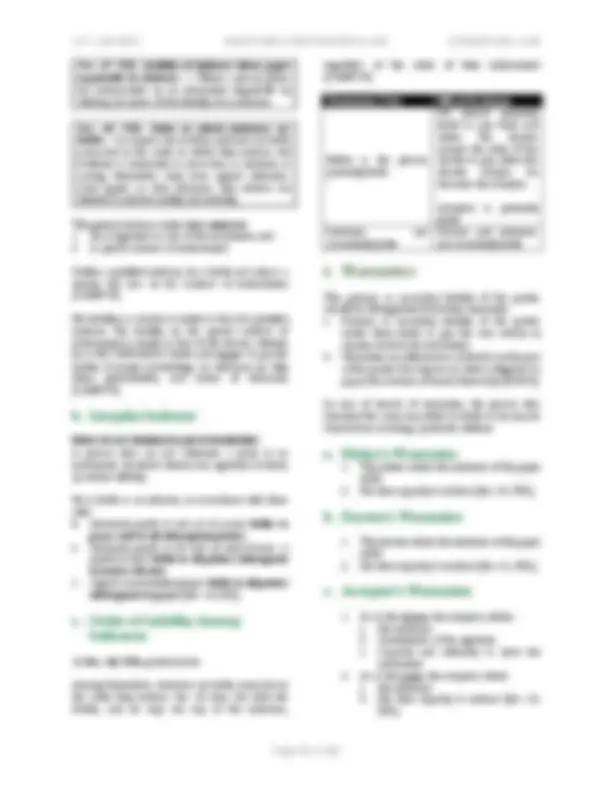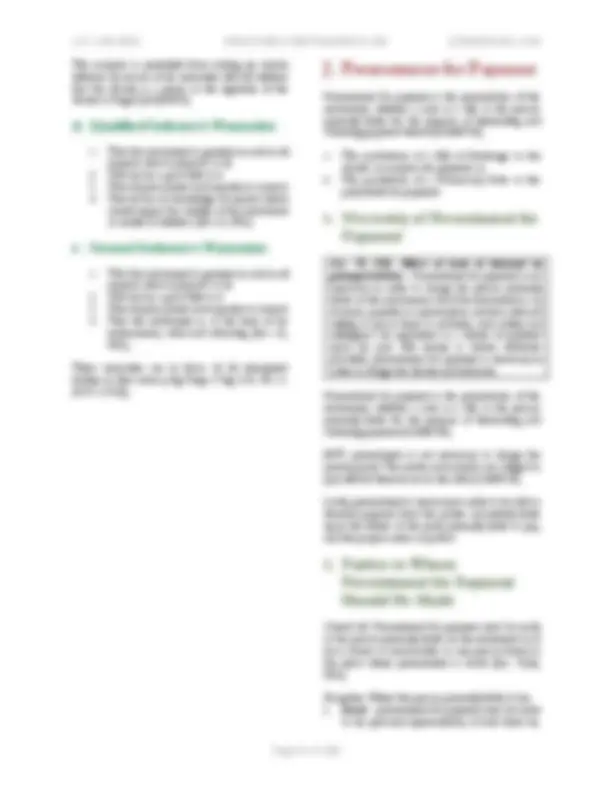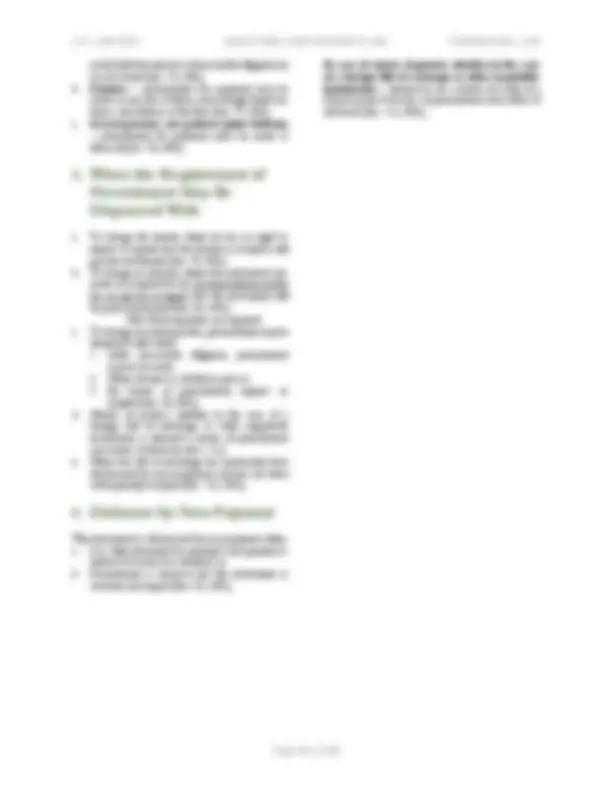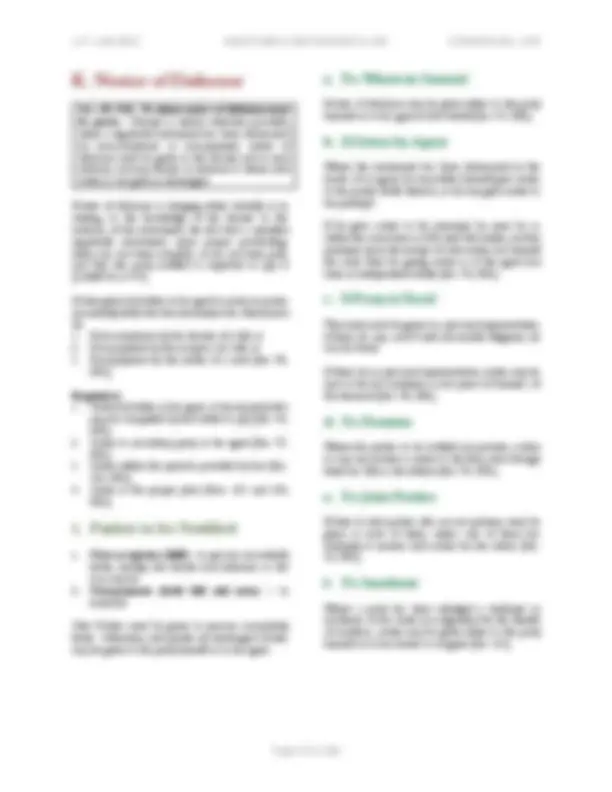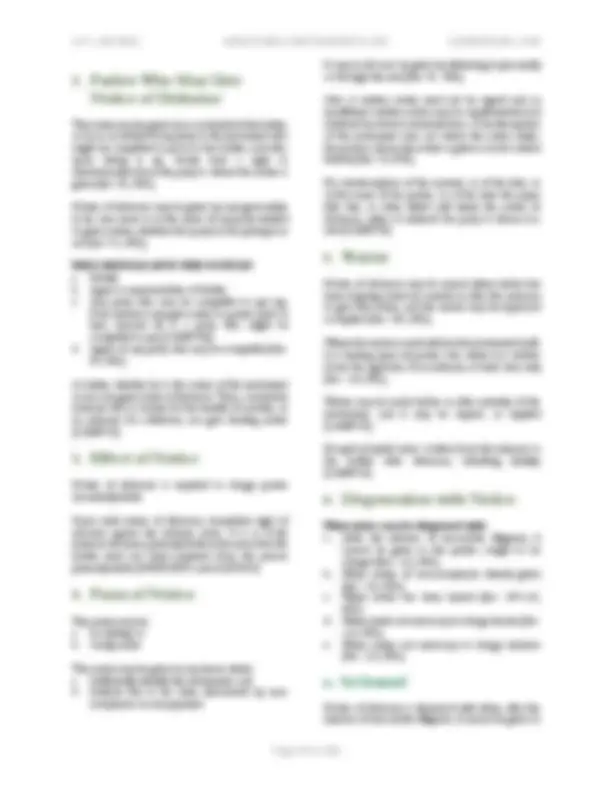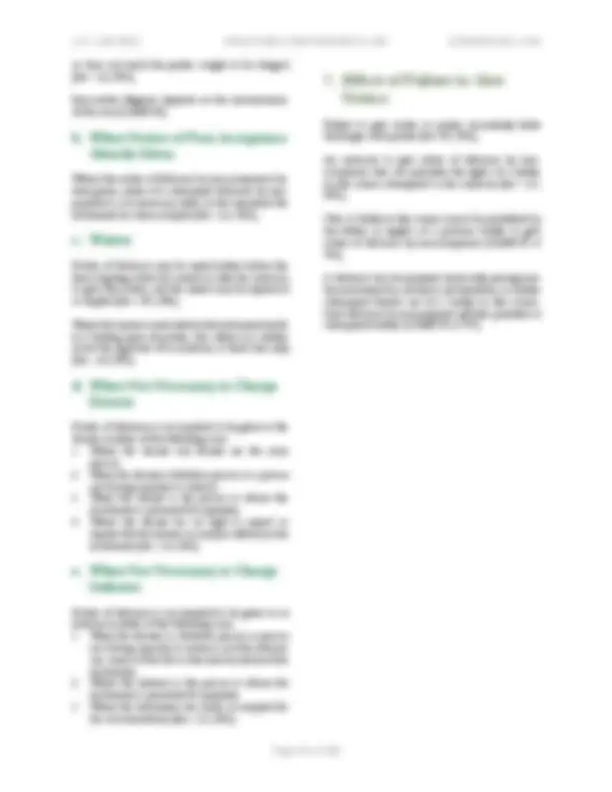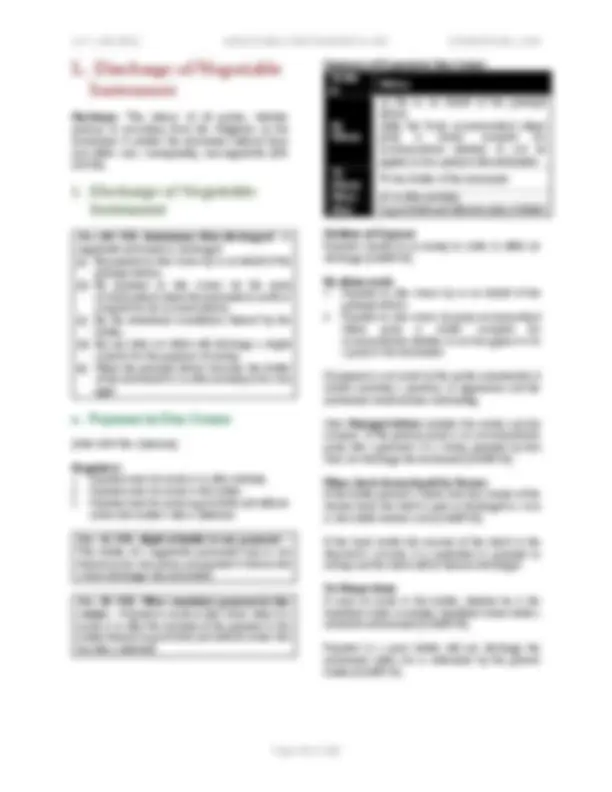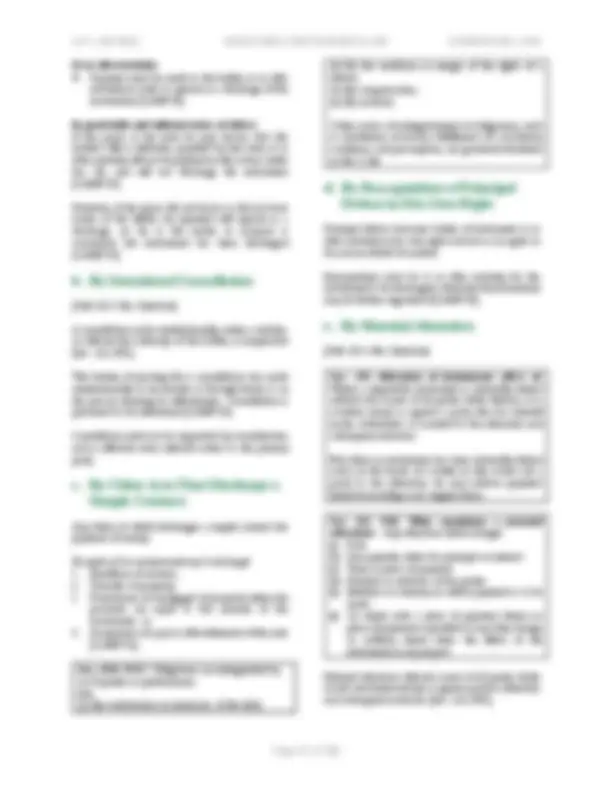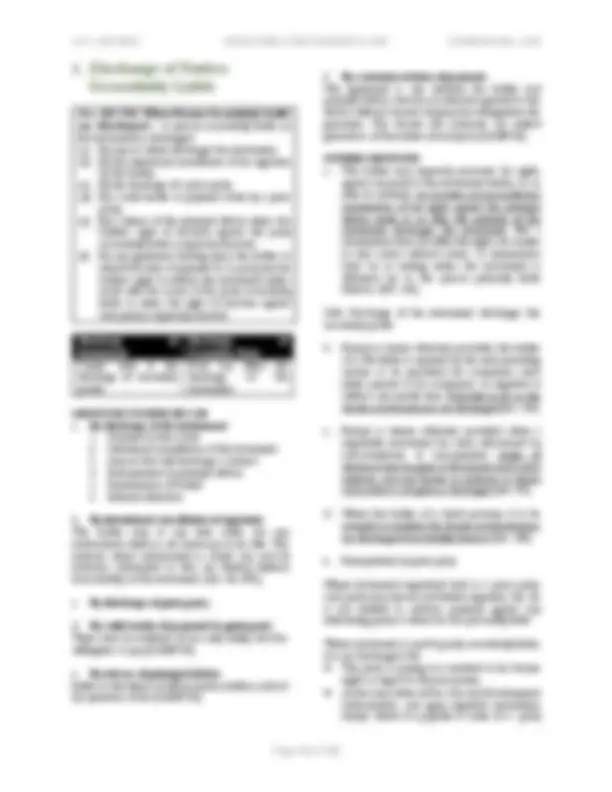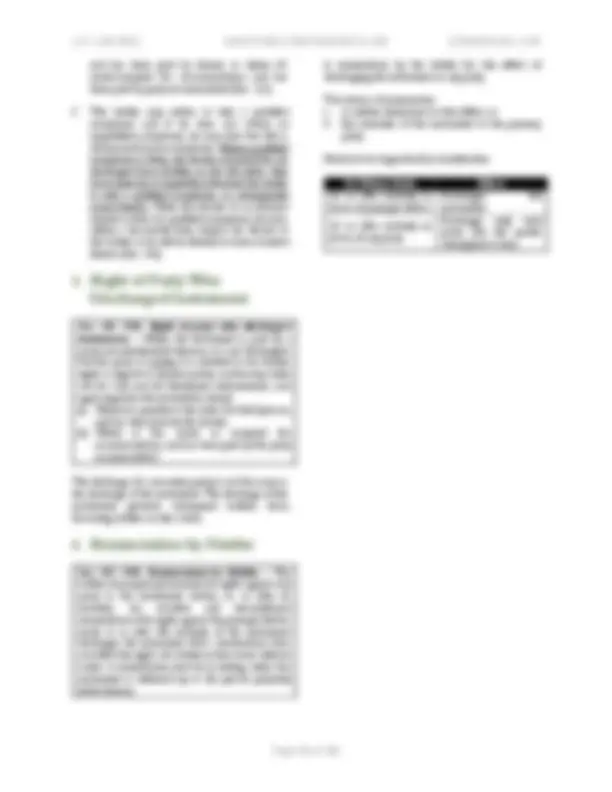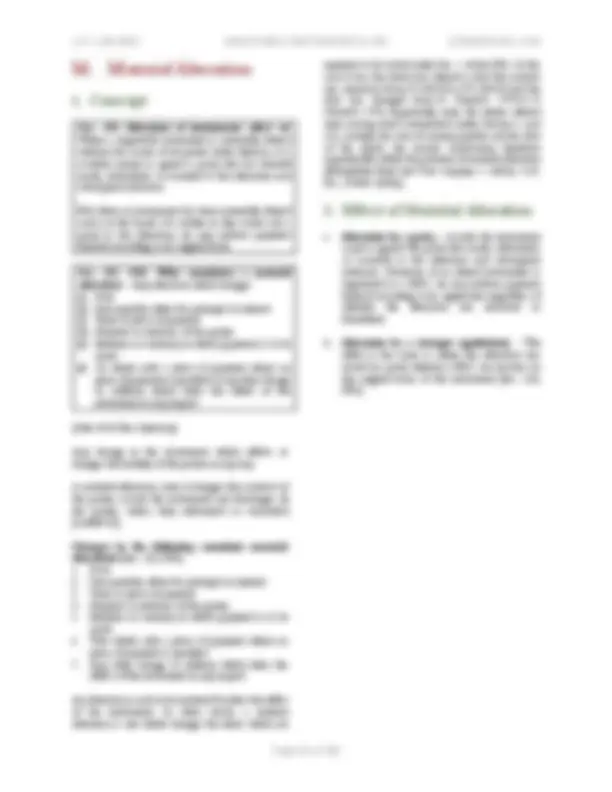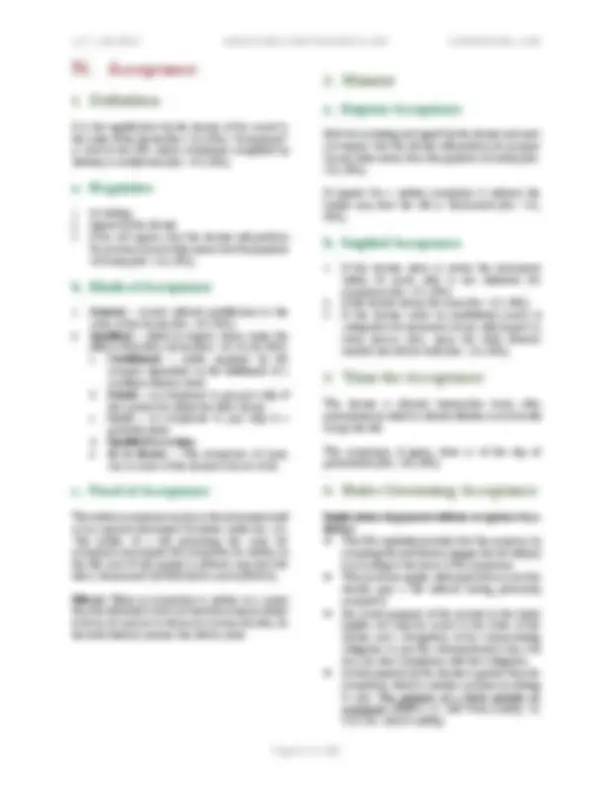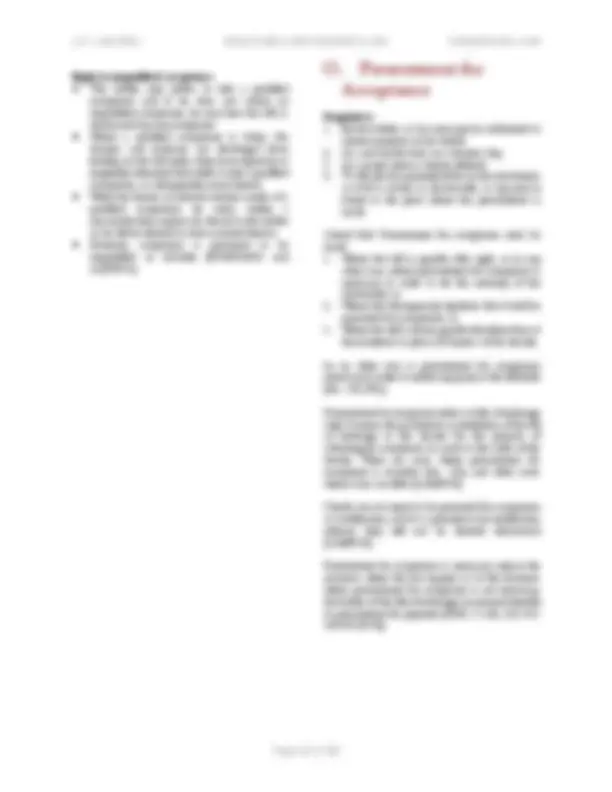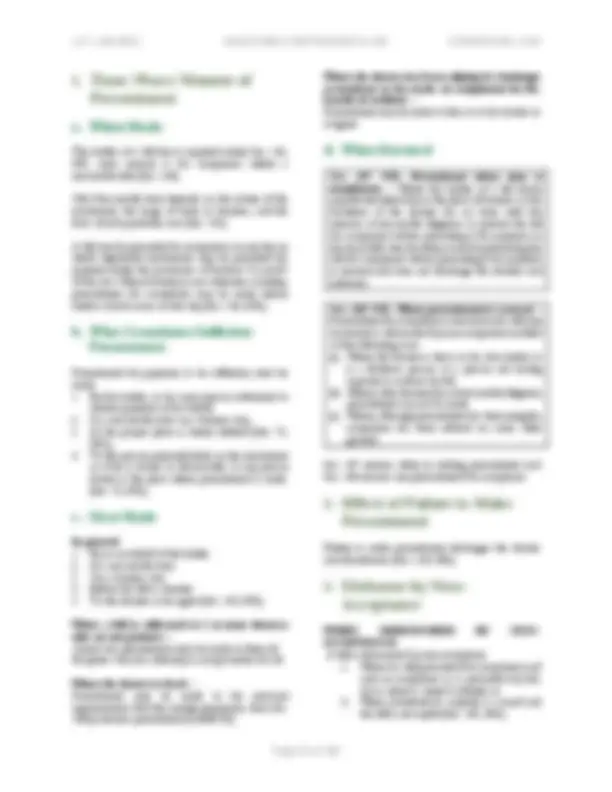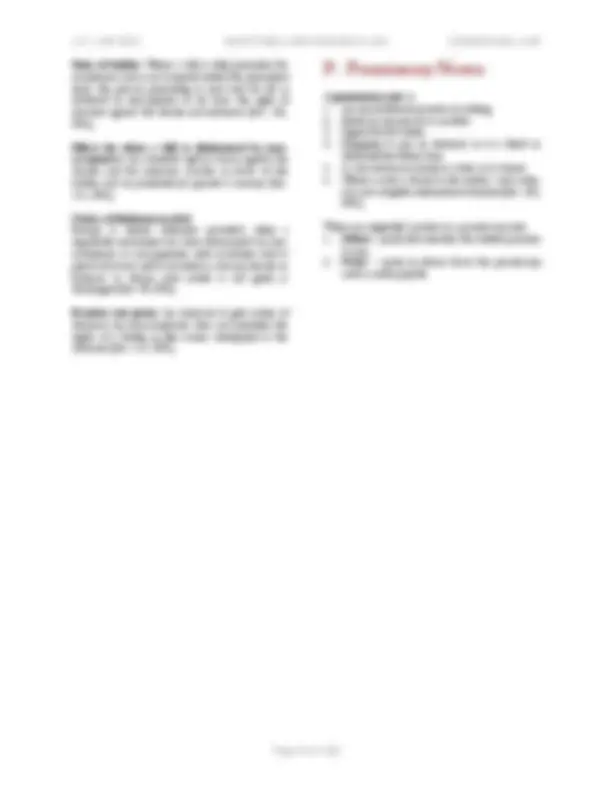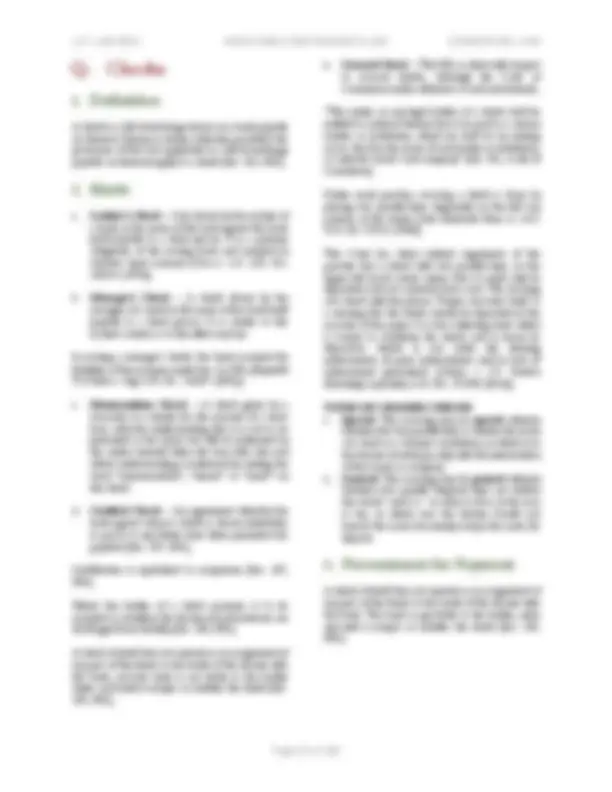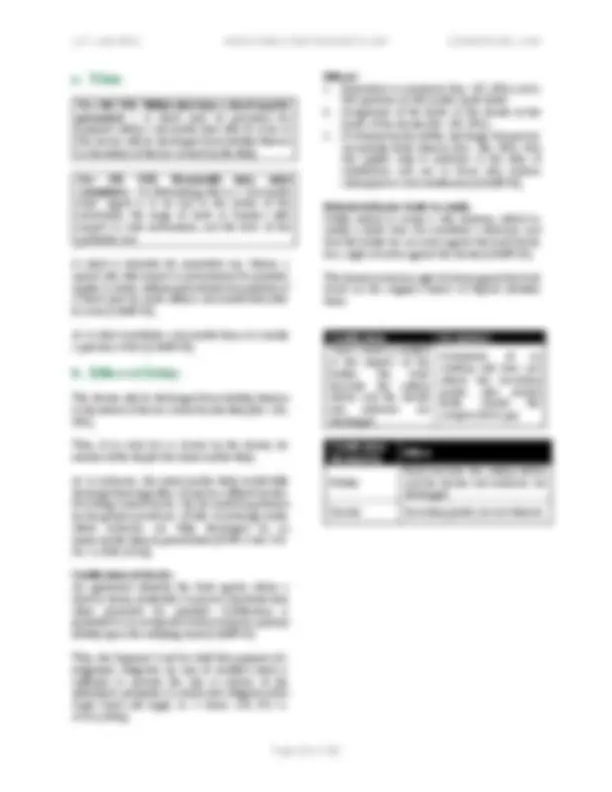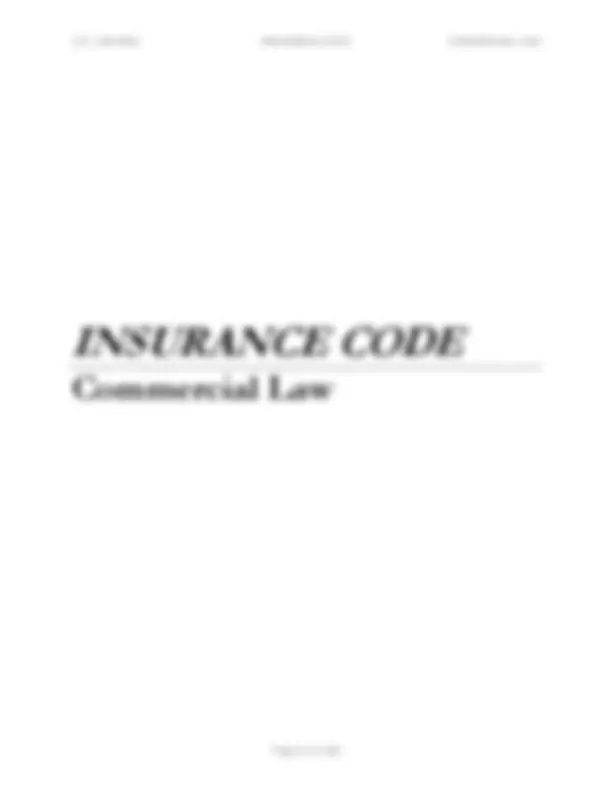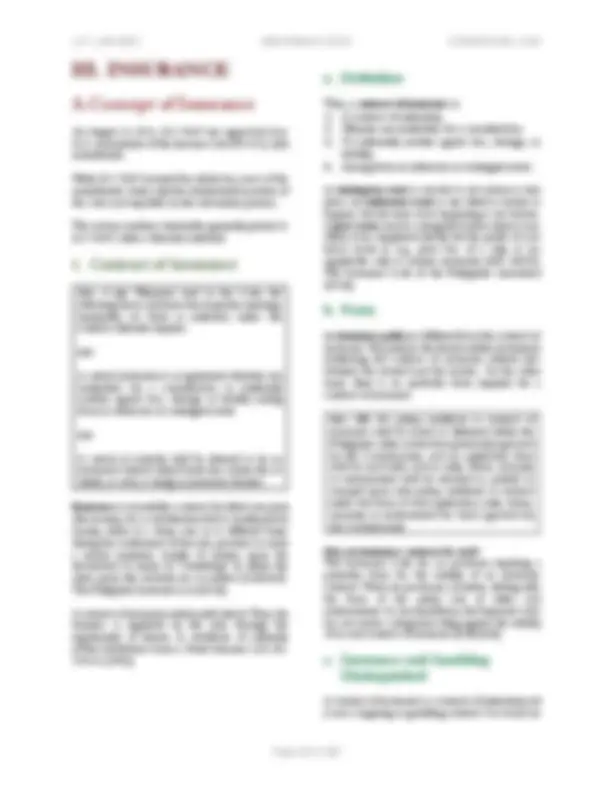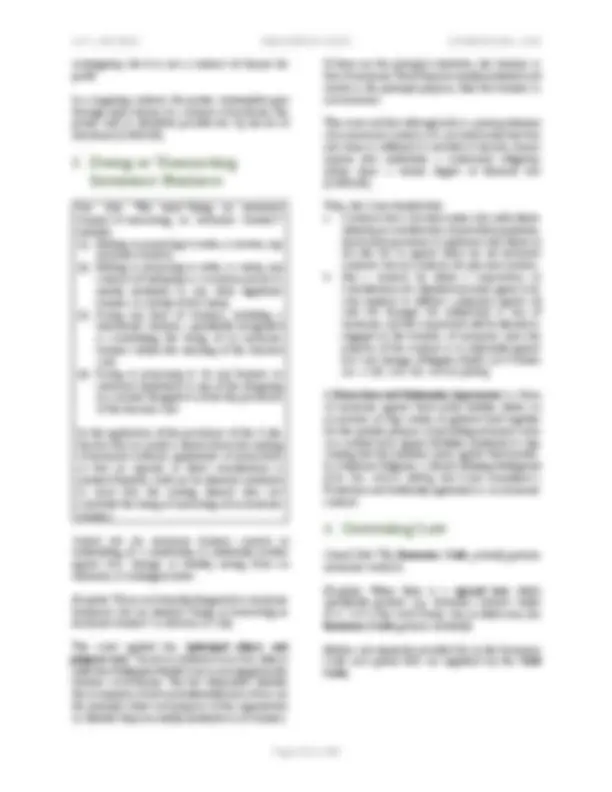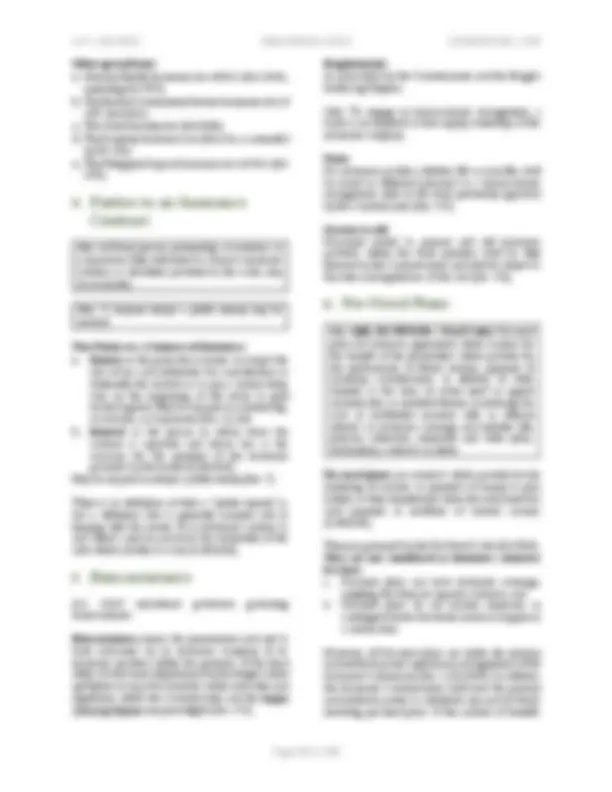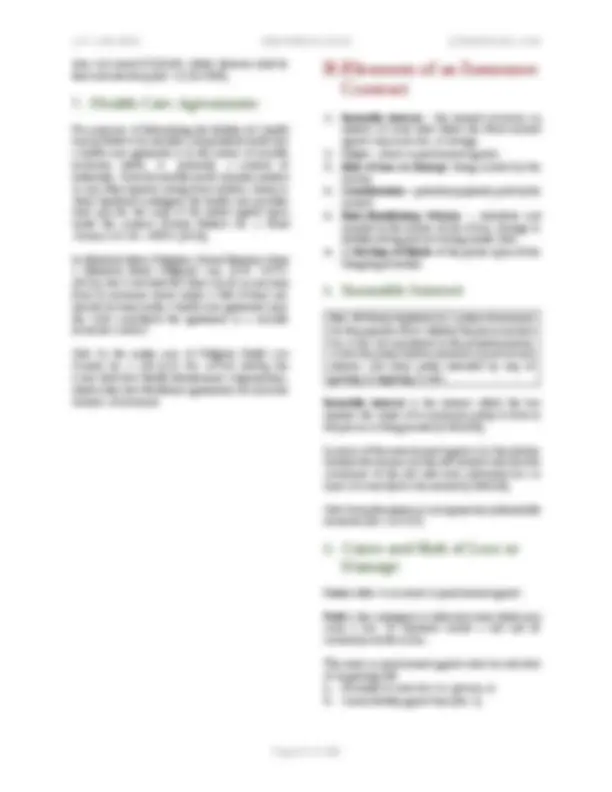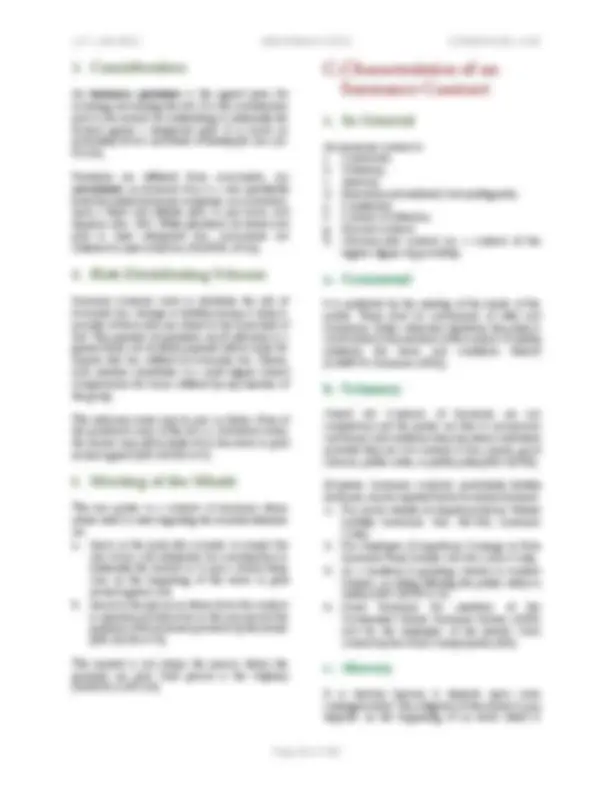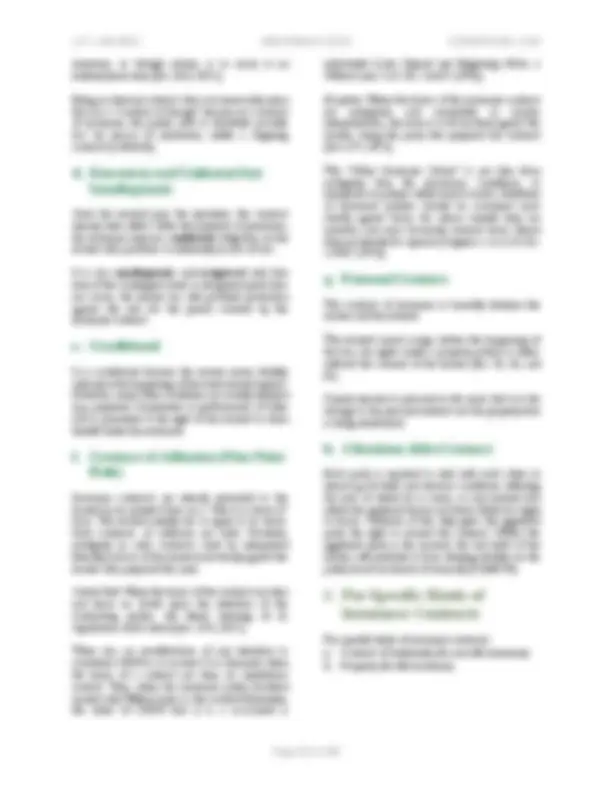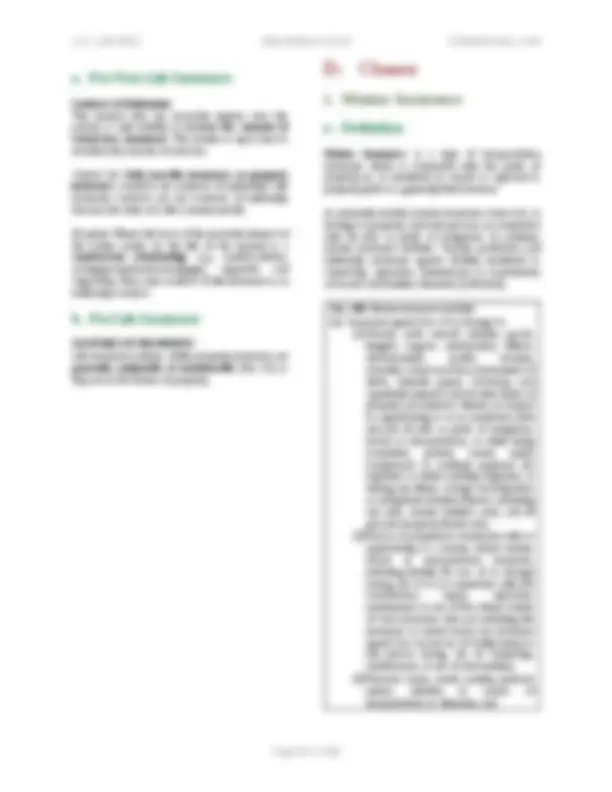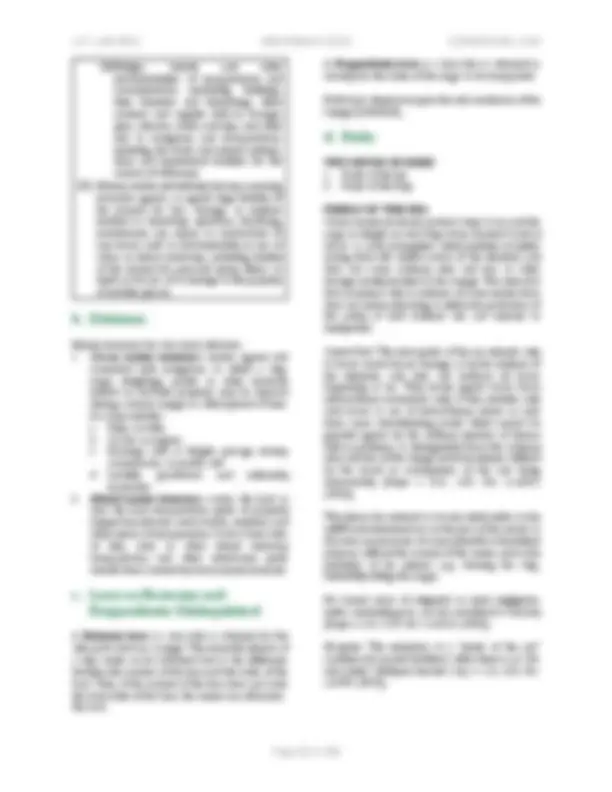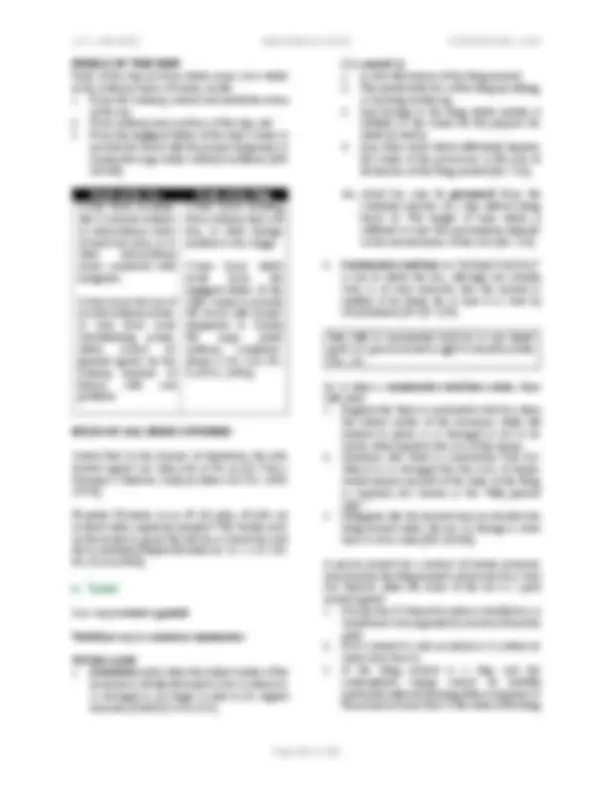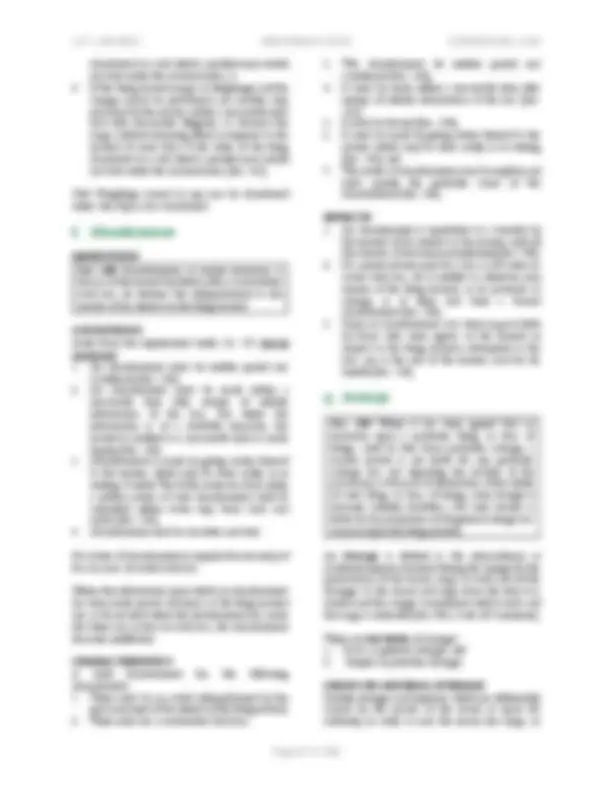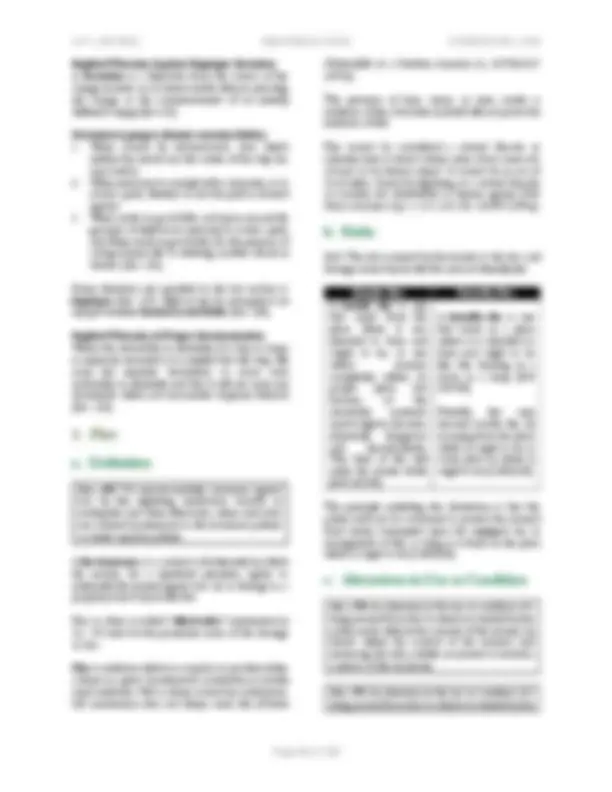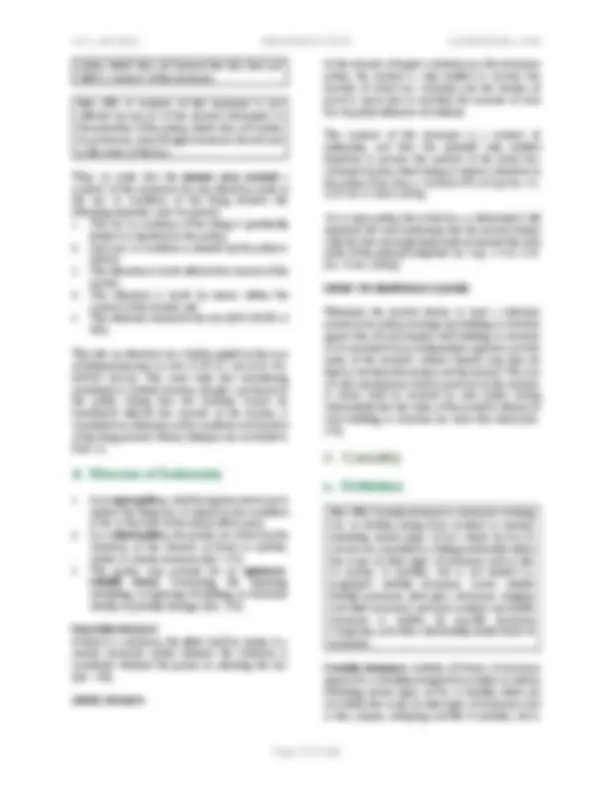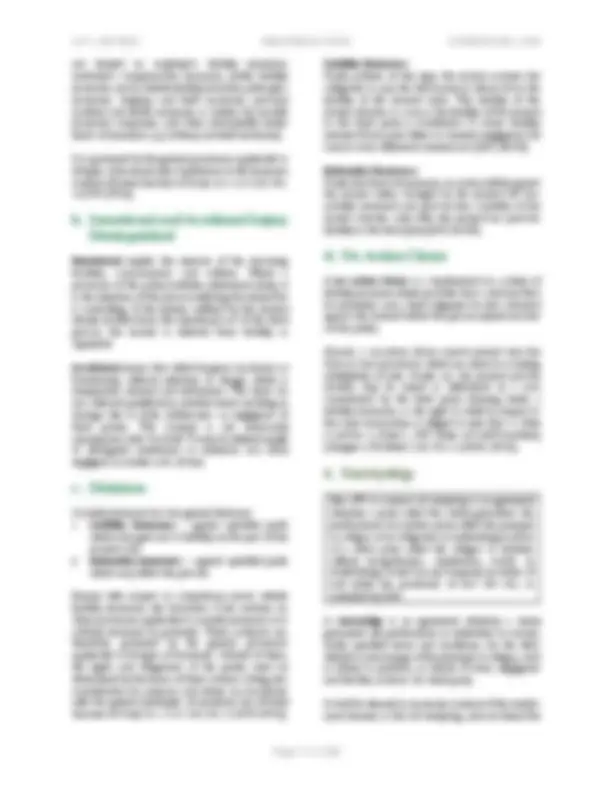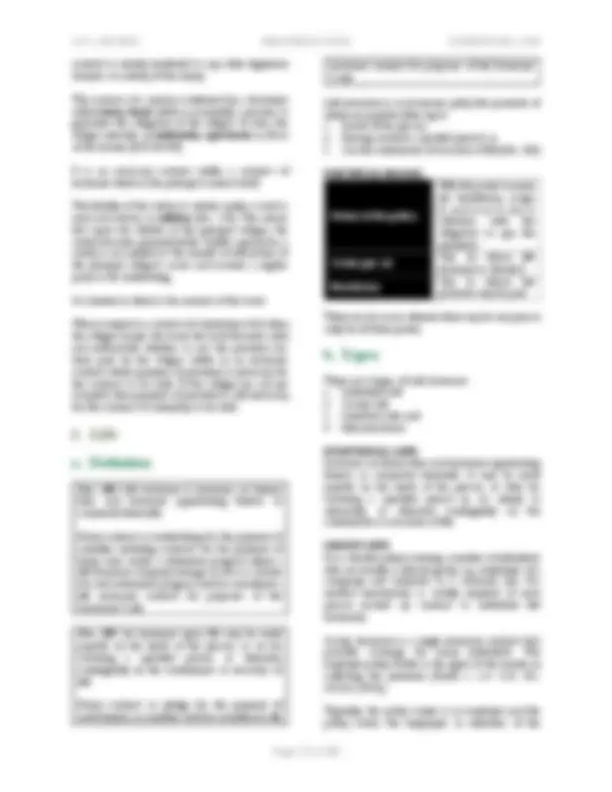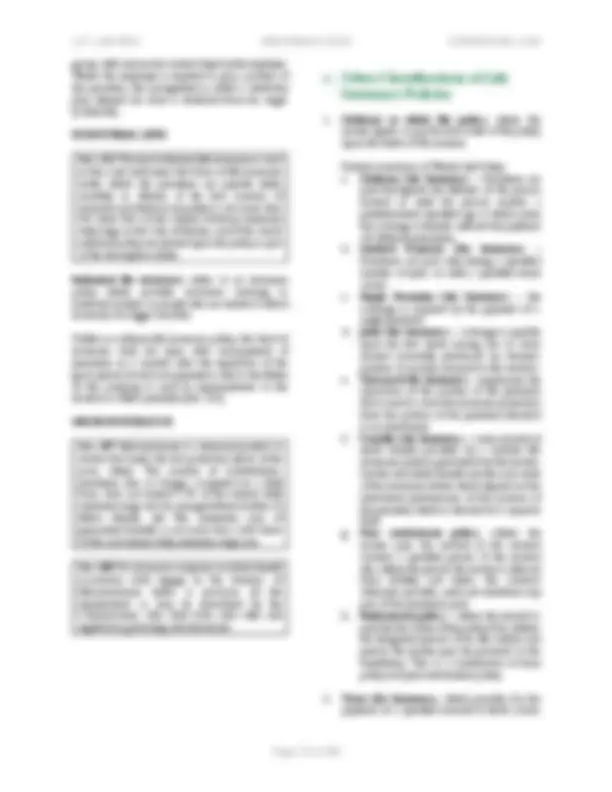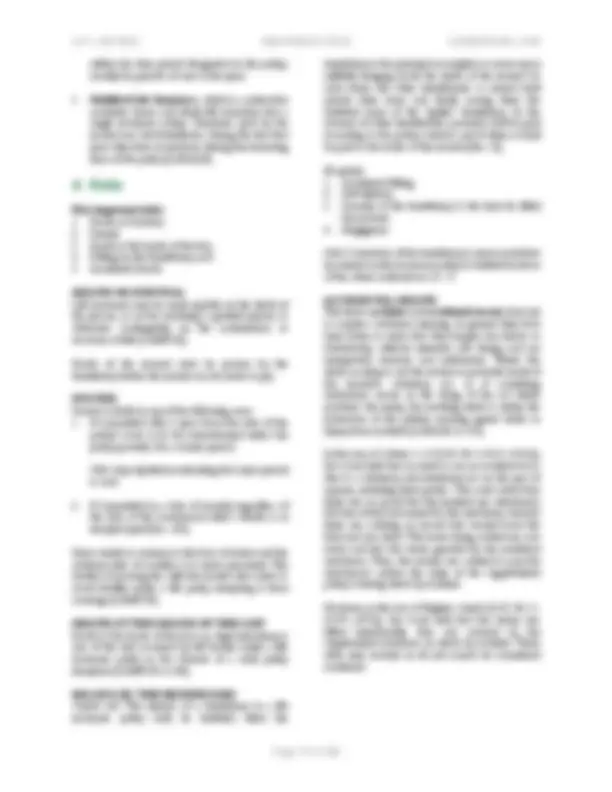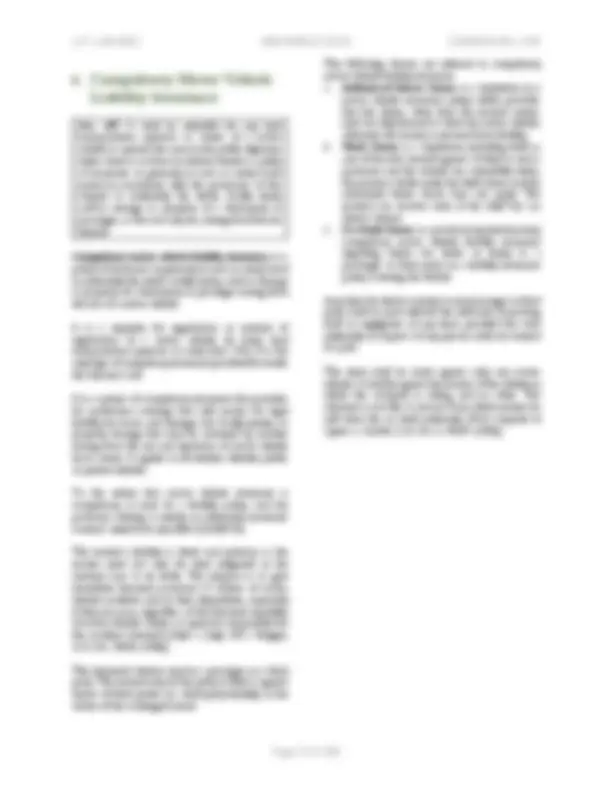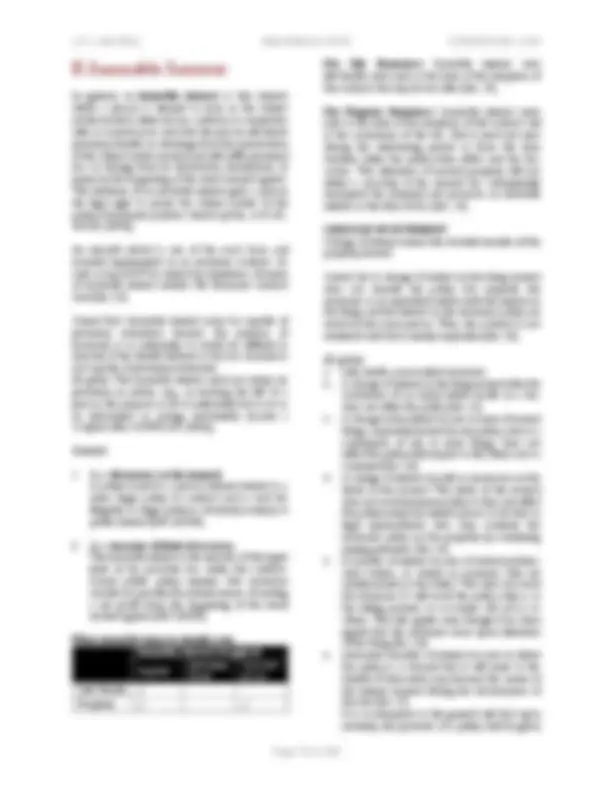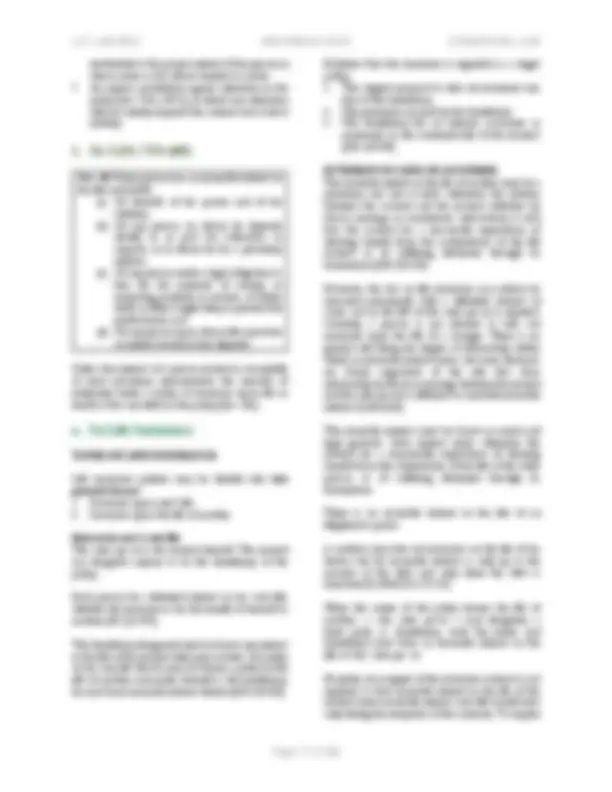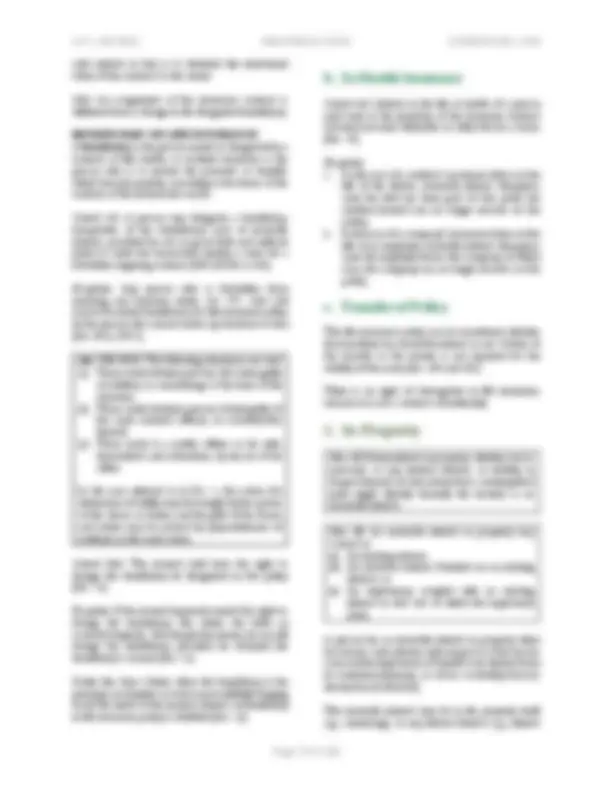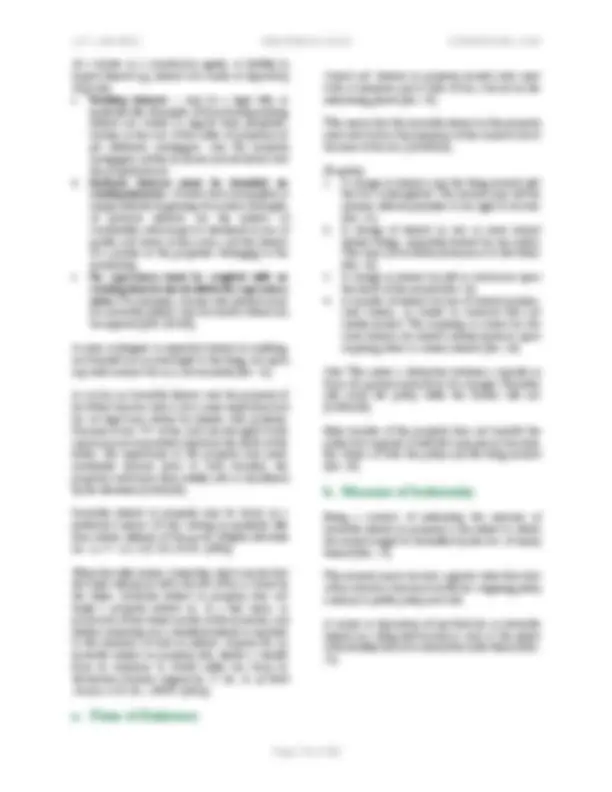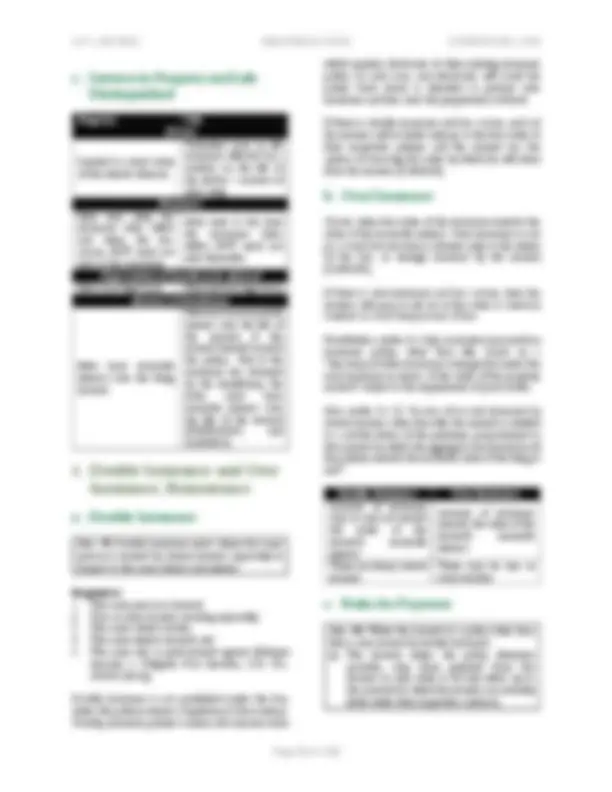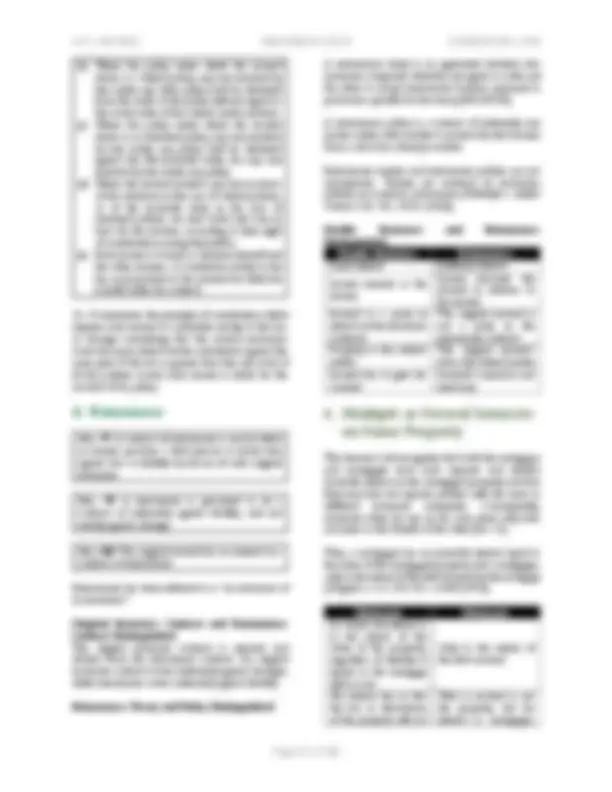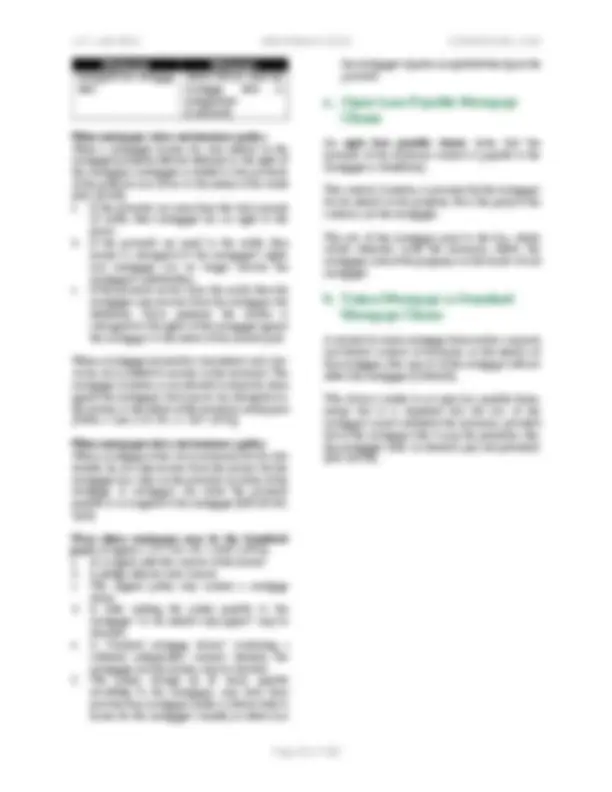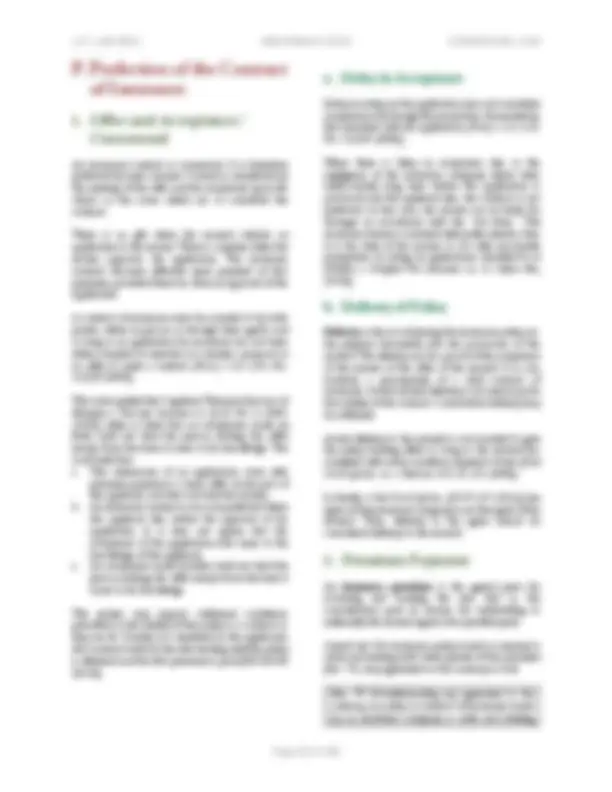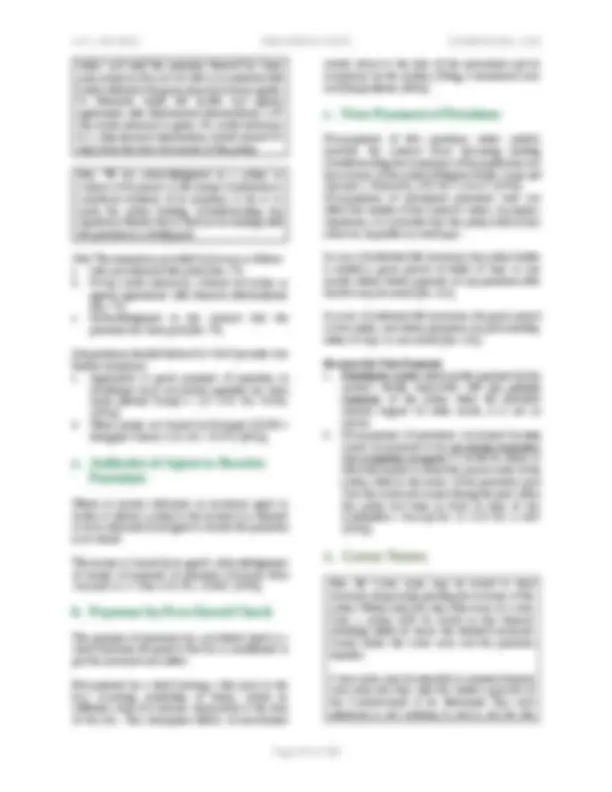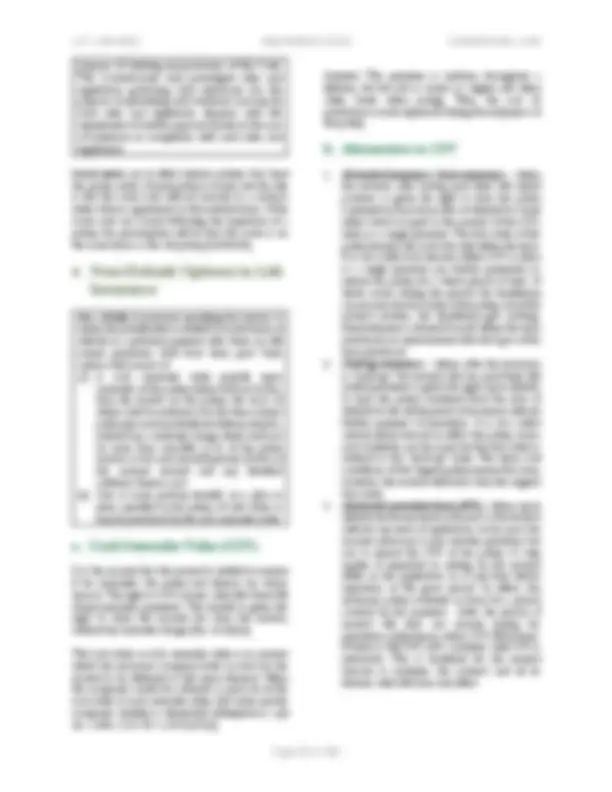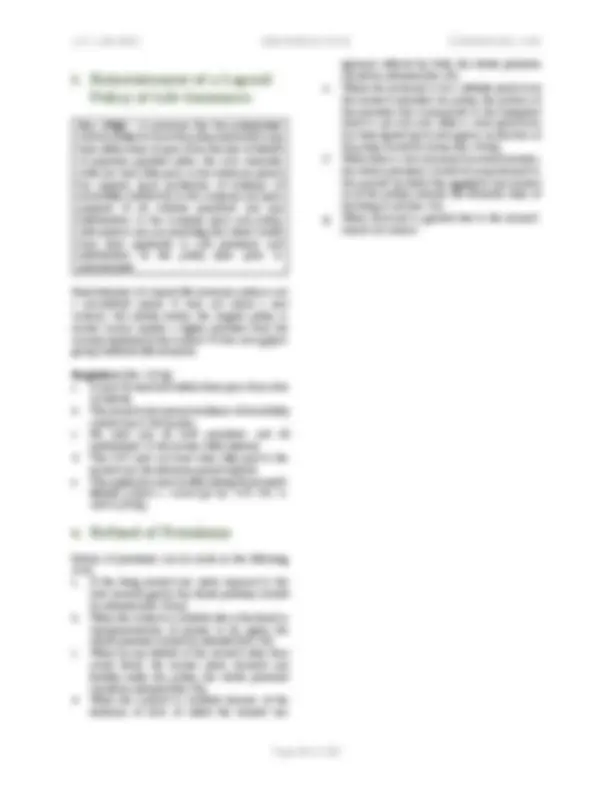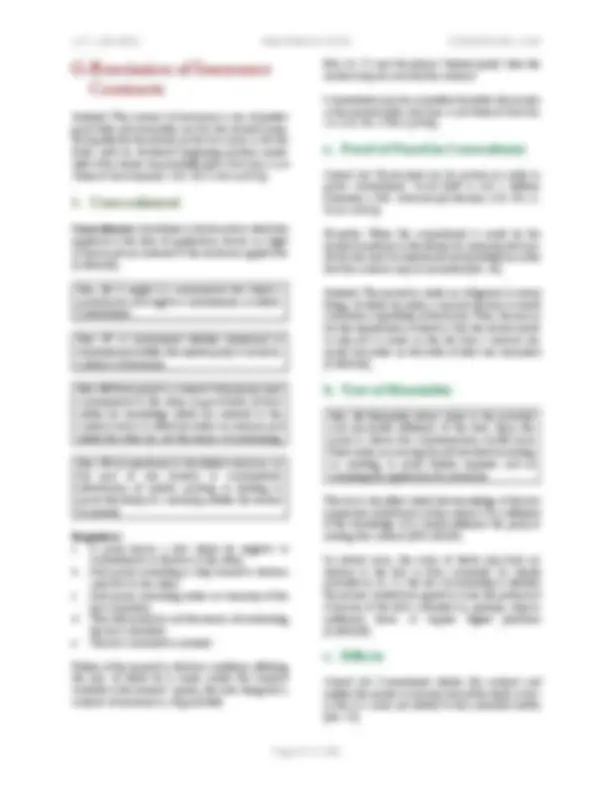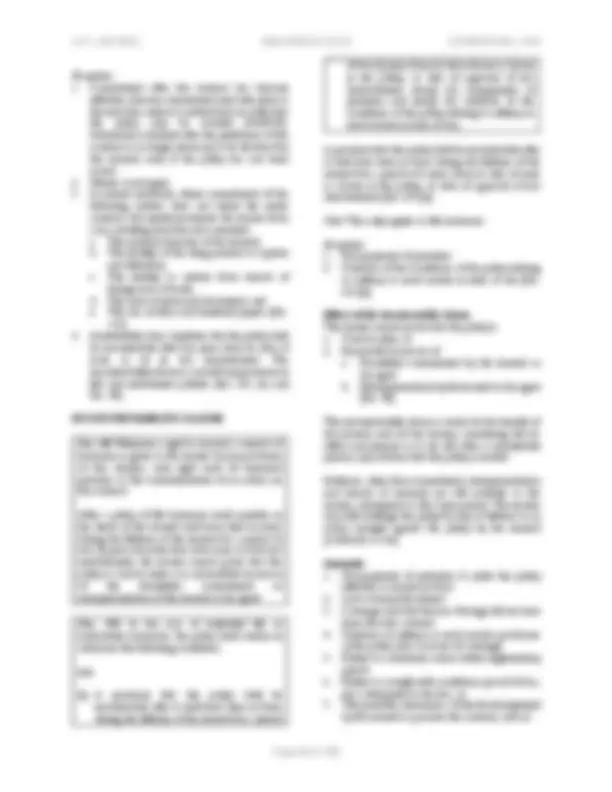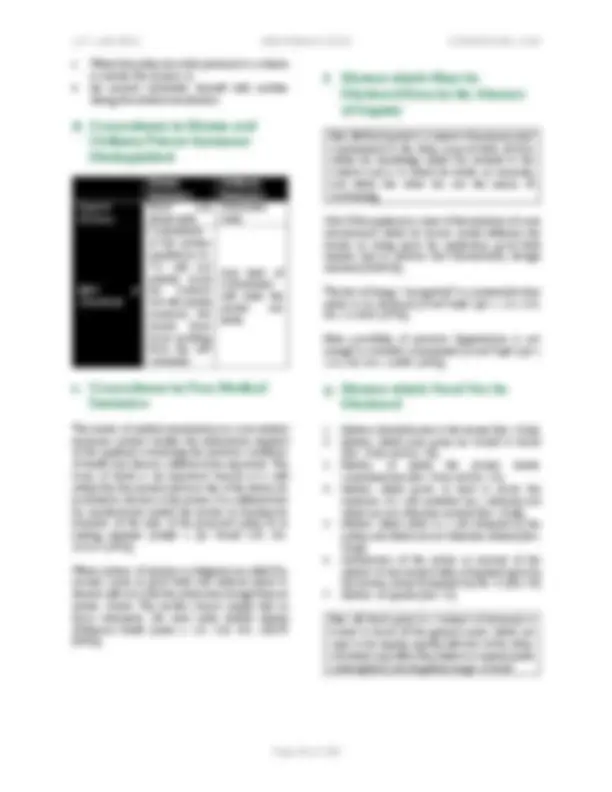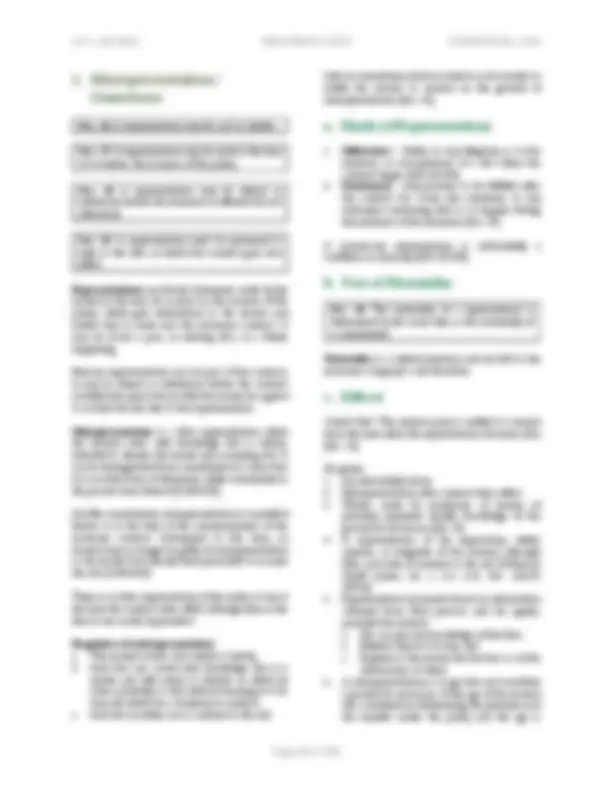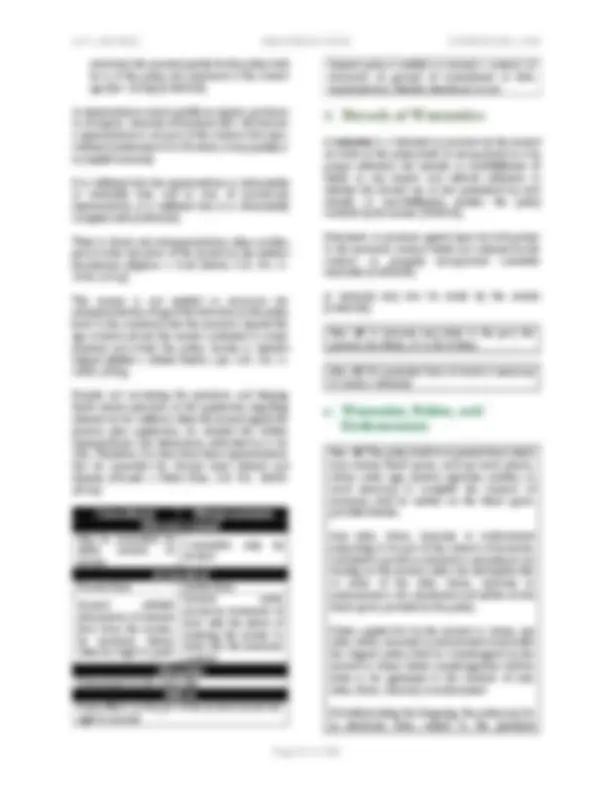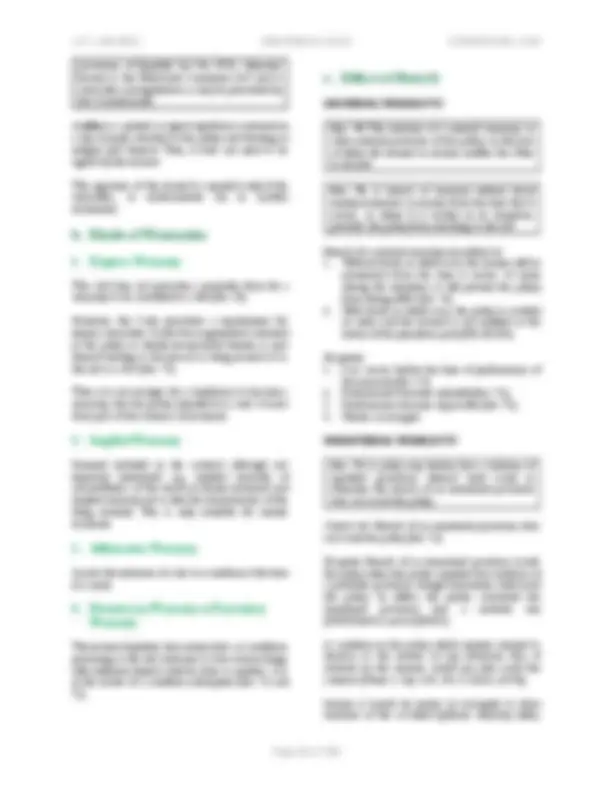Download UP LAW BOC 2019 Commercial Law and more Study notes Commercial Law in PDF only on Docsity!
COMMERCIAL LAW
COMMERCIAL LAW
COMMERCIAL LAW
- Payment/Delivery of Proceeds of Sale or Disposition of Goods, Documents or
- Liabilities of Controlling Persons, Aider and Abettor and Other Secondary
INTELLECTUAL PROPERTY CODE
- LETTERS OF CREDIT TABLE OF CONTENTS
- I. LETTERS RECEIPTS ................................OF CREDIT ..........................AND TRUST
- A. B. Definition and Nature of Letter of CreditParties to a Letter of Credit
- C. Basic Principles of Letter of Credit 1. Doctrine of Independence
- Fraud Exception PrincipleDoctrine of Strict Compliance
- D. Definition and Concept of a Trust Receipt Transaction [Sec. 4, PD 115]
- Loan/Security FeatureOwnership of the Goods, Documents
- and Instruments Under a Trust Receipt
- E. F. Rights of the EntrusterObligation and Liability of the Entrustee
- Instruments in Case of NonRisk of Loss of Goods, Document-Sale ......s or 2. InstrumentsReturn of ................................Goods, Documents......... 11 or
- G. Remedies Available Instruments
- H. Warehouseman’s Lien
- NEGOTIABLE INSTRUMENTS LAW
- II. NEGOTIABLE INSTRUMENTS LAW A. Definition and Purpose..............................
- B. Forms 1. Requisites of Negotiability and Interpretation
- C. 2.Completion and Delivery Kinds of Negotiable Instruments...........................
- Insertion of DateIncomplete but Delivered Instruments.................................
- InstrumentsComplete but Undelivered Instruments 3. Incomplete^22 and Undelivered
- D. Signature
- Signing in Trade NameSignature of Agent
- E. 4.Consideration Forgery 3. Indorseme 24 nt by Minor or Corporation
- ConsiderationEffect of Want of Consideration 1. 2. Who is a HoldBurden of Proofer for Value (HFV)? – Presumption 27 of
- F. Accommodation Party 1. Liability of an Accommodation Party
- Accommodation Party as Surety - 3. Corporation as Accommodation Party
- G. Negotiation 1. Distinguished f ................................rom Assignment.................
- Modes of NegotiationKinds of Indorsement.........................
- H. Rights 1. Holder in Due Course (HDC) of the Holder
- Holder Not in Due CourseDefenses against the Holder
- I. Liabilities of Parties 1. Maker
- DrawerAcceptor
- IndorserWarranties................................
- J. Presentment for Payment 1. Necessity of Presentment for Payment
- Payment Should Be MadeWhen the Requirement of Presentment 2. Parties^41 to Whom Presentment for
- May Be Dispensed WithDishonor by Non-Payment
- K. Notice of Dishonor 1. Parties to be Notified
- Effect of NoticeForm of Notice 2. Parti Dishonores Who................................ May Give Notice.............. 44 of
- WaiverDispensation with Notice
- L. 7.Discharge of Negotiable Instrument Effect of Failure to Give Notice
- Discharge of Negotiable InstrumentDischarge of Parties Secondarily Liable.
- InstrumentRenunciation by Holder 3. Right^48 of Party Who Discharged
- M. Material Alteration 1. Concept......................................................................................
- N. 2.Acceptance Effect of Material Alteration
- DefinitionManner
- Time for AcceptanceRules Governing Acceptance
- O. Presentment for Acceptance 1. Time/Place/Manner of Presentment
- Effect of Failure to Make Presentment
- P. 3.Promissory Notes Dishonor by Non ................................-Acceptance..................
- Q. Checks 1. Definition
- KindsPresentment for Payment
- INSURANCE CODE COMMERCIAL LAW
- III. INSURANCE A. Concept of Insurance - 1. 2. Contract of InsuranceDoing or Transacting......................... Insurance - 3. BusinessGoverning Law - 4. 5. Parties to anBancassurance Insurance Contract - 6. 7. PreHealth Care A-Need Plansgreements................................
- B. Elements of an Insurance Contract 1. Insurable Interest
- Cause and Risk of Loss or DamageConsideration
- RiskMeeting of the Minds-Distributing Scheme
- C. Characteristics of an Insurance Contract 1. In General............................................
- For Contracts Specific................................ Kinds of ..............Insurance
- D. Classes 1. Marine Insurance
- FireCasualty
- SuretyshipLife
- Compulsory Insurance Motor Vehicle............. Liability
- E. Insurable Interest 1. In Life/Health................................
- In PropertyDouble Insuranc ................................e and Over Insurance;..........
- ReinsuranceMultiple or Several Interests on Same
- F. Perfection of the Contract of Insurance Property
- Offer and Acceptance/ ConsensualPremium Payment...............................
- Cover NotesNon-Default Options in Life Insurance
- Reinstatement of a Lapsed Policy of Life
- InsuranceRefund of Premiums
- G. Rescission of Insurance Contracts 1. Concealment................................
- Misrepresentation/ OmissionsBreach of Warranties
- H. Claims Settlement and Subrogation 1. Concept of Loss
- Notice andGuidelines on Claims Settlement Proof of Loss..........................
- I. Insurance Commissioner 1. Jurisdiction and Adjudicatory Powers
- Revocation of Certificate of Authority
- Liquidation of Insurance Company...
- TRANSPORTATION LAWS
- IV. TRANSPORTATION LAWS A. Common Carriers - 1. 2. ConceptDiligence................................ Required of ................Common - 3. CarriersLiabilities of Common Carriers...............................................
- B. Vigilance over Goods 1. Liability, in General..........................................................
- Exempting CausesContributory Negligence
- Dur Responsibility for Goodsation of .................Extraordinary
- Stipulation for Limitation of Liability
- C. 6.Safety of Passengers Liability for Baggage of Passengers
- Liability, in generalVoid Stipulations...............................
- Duration of LiabilityLiability for Acts of Others
- Contributory NegligenceExtent of Liability for Damages
- D. Bill of Lading 1. Three-Fold Character
- DelivPeriod for Filing Claimsery of Goods
- E. 4.Admiralty and Maritime Commerce Period for Filing Actions..................
- Charter PartiesLiability of Ship Owners and Shipping
- AgentsAccidents and Damages in Maritime
- CommerceCarriage of Goods by Sea Act
- Special Commerce Contracts of .........Maritime
- F. 6.The Warsaw Convention Passengers on Sea Voyage
- ApplicabilityLimitation of Liability................................
- Willful MisconductJurisdiction.....................................................................
- CORPORATION CODE.....................
- V. CORPORATION LAW A. Corporation................................
- B. 1.Classes of Corp Definition ................................orations
- Stock CorporationNon-Stock Corporation.............................
- C. 3.Nationality of Corporations Other Corporations
- Place of Incorporation TestControl Test
- D. 3.Corporate Juridical Personality Grandfather Rule
- Doctrine Personality ................................of Separate .........Juridical COMMERCIAL LAW
- Doctrine of Piercing the Corporate Veil
- E. Incorporation and Organization 1. Promoter................................
- IncorporatorsCorporate Name — Limitations on Use.... 2. 3. Steps in IncorporationNumber and Qualifications 143 of
- of Corporate NameCorporate Term
- Minimum Subscription Requirements Capital Stock and
- Articles of IncorporationRegistration and Issuance of Certificate..................
- of IncorporationAdoption of By-................................Laws
- F. Corporate Powers 1. General Powers;................................ Theory of General.....
- Capacity [Sec. 36]Specific Powers; ..............................Theory of Specific
- Capacity [Secs. 37How Corporate Powers are Exercised-44]
- Trust Fund Doctrine
- G. Board o 1. Doctrine of Centralized Managementf Directors and Trustees.............
- Business Judgment Rule
- TrusteesElections [Sec. 24]................................ 3. Ten Disqualificationsure, Qualifications, of Directors andor
- RemovalFilling of Vacancies [Sec. 29]
- Compensation [Sec. 30]Fiduciary Duties and Liability Rules
- Responsibility for CrimesInside Information
- ContractsExecutive Committee [Sec. 35]............................................
- H. 13.Stockholders and Members Meetings................................
- Rights of Stockholders and Members
- Participation in ManagementProprietary Rights
- Remedial RightsObligations of a Stockholder
- I. 6.Capital Structure Meetings................................
- Subscription AgreementsConsideration for Stocks
- Shares of StockPayment of Balance of Subscription..
- [Secs. 66 and 67]Certificate of Stock................................
- Stock and Transfer Book
- J. Dissolution and Liquidation 1. Modes of Dissolution 7. Disposition Shares and Encumbrance................. 195 of
- K. 2.Other Corporations Methods of Liquidation......................................................
- Close CorporationsNon-Stock Corporations
- Religious CorporationsForeign Corporations
- L. Mergers and Consolidations 1. Definition and Concept
- Constituent Corporation ................................vs. Consolidated.......
- Plan of Merger or Consolidation [Sec. 76]
- Articles of Merger or ConsolidationProcedure...........................................
- LimitationsEffects [Sec. 80]
- SECURITIES REGULATION CODE
- VI. SECURITIES REGULATION CODE A. State Policy
- B. C. Definition ofKinds of Securities Securities
- Exempt Securities [Sec. 9]Exempt Transactions [Sec. 10]
- D. Procedure for Registration of Securities 1. Registration of Securities [Secs. 12 and.
- 13]Powers of the SEC During Registration
- E. Prohibitions on Fraud, Manipulation and
- Insider Trading 1. Manipulation of Security Prices [Sec. 24]
- Fraudulent Transactions [Sec. 26]
- F. 3.Protection of Investors Insider Trading [Sec. 27]
- Tender Offer Rule [Sec. 19]Rules on Proxy Solicitation [Sec. 20]
- G. 3.Civil Liability Disclosure Rule
- Civil Liabilities on Account of False Registration Statement [Sec. 56]
- Reports [Sec. 57]Civil Liability of Fraud in Connection 2. Civil Liabilities Arising in Connection With Prospectus, Communications and
- with Securities Transactions [Sec. 58]
- Need Plans [Sec. 60] 5. Civil Commodity Futures Contracts and Pre Liability With Respect to-
- Civil Liability on Account of Insider Trading [Sec. 61] COMMERCIAL LAW
- Damages 1. Settlement of Cases [Sec. 55] H. Settlements, Liability [Sec. 51] Prescriptive Period, 233 and
- Prescription of Actions [Sec. 62]Damages [Sec. 63]
- BANKING LAWS
- VII.BANKING LAWS A. The New Central Bank Act (NCBA) [R.A. - 7653, as amended by R.A. 11211] 1. State Policies - 3. Monetary Board (MB) 2. Responsibility and Primary Objective of the Bangko Sentral ng Pilipinas (BSP) - 4. 5. The BSP and Banks in DistressLegal Tender Power
- B. 6.Law on Secrecy of Bank Deposits [RA 1405, Foreign Exchange Operations
- as Amended 1. Policy................................]
- Prohibited ActsDeposits Covered
- ExceptionsPower of the Om ................................budsman to Examine.........
- AccountsGarnishment of Deposits
- Confidentiality Deposits of Foreign............. Currency
- C. General Banking Law of 2000 (GBL) 1. Introduction
- QuasiCore Banking Functions-Banks and Trust Entities...................
- Bank Powers and LiabilitiesNature of Bank Funds .............and Bank
- DepositsStipulation on Interests
- Grant Requirements of ................................Loans and Security.....
- Diligence Require of Banks..............
- A. Intellectual Property Rights in General 1. Intellectual Property Rights.............. VIII. INTELLEC 258 - TUAL PROPERTY CODE
- Scope of ProtectionOther Forms of Intellectual Property 2. The Trademarks, Difference and BetweenPatent LieCopyright, in The
- B. Patents - 1. 2. Purpose of the Patent LawWhat are Patentable - 3. 4. NonOwnership of a Patent-Patentable Inventions...................... - 5. 6. Term of a PatentCancellation of Patent - 7. Remedy Inventor ................................of the True and............. Actual - 8. 9. Rights Conferred by a PatentLimitations of Patent Rights - 10. 11. Patent InfringementTests in Patent Infringement - 13. Judgment Against theLicensing Infringer............ 12. Criminal Infringement arises only after a Final Liability for Patent - 14. Assignment and Transmission of Rights - C. Trademarks 1. Definition of Marks, Collective Marks, - 2. Trade NamesAcquisition of Ownership of Mark - 3. Acquisition Name................................ of Ownership.................. of Trade - 4. 5. NonUse of Mark as a Requirement-Registrable Marks..................... - 6. Tests Similarity between Marks To Determine Confusing - 7. 8. WellRights Conferred by Registration-Known Marks........................... - 9. 10. Infringement and RemediesUnfair Competition........................... - 11. 12. Trade Names or Business NamesCollective Marks................................ - D. Copyright 1. Definition................................ - 2. 3. BasicCopyrightable Works Principles - 4. 5. NonRights of Copyright Owner-Copyrightable Works............... - 6. 7. Rules on Ownership of CopyrightLimitations on Copyright - 8. Copyright infringement - SPECIAL LAWS - IX. SPECIAL LAWS A. Anti-Money Laundering Act - 1. 2. Policy of the LawCovered Institutions and Their - Obligations [RA 9160, as amended by RA 10365 and RA 10927] - 3. 4. Covered TransactionsSuspicious Transactions - 5. 6. OblWhen is Money Laundering Committedigations of Covered Institutions - 7. Unlawful Activities or Predicate Crimes
- Anti (AMLC)-Money................................ Laundering.............. Council COMMERCIAL LAW
- Freezing of Monetary Instrument or Property
- ForfeitureAuthority to Inquire into Bank Deposits
- Policy B. Electronic^297 Commerce Act of 2000 (RA
- ApplicationLegal Recogniti ................................on of Electronic Data........
- Messages, Documents and Signatures
- Presumption Signatures................................ Relating to ...........Electronic
- DocumentObligation of Confidentiality................................ 5. Admissibility and Evidential Weight of Electronic Data Message or Electronic
- Forma Form................................tion of Contracts in Electronic...................
- C. Data Privacy Act (RA 10173) 1. Scope
- Personal Information vs. Sensitive Personal.......
- Processing of Personal InformationRights of Data Subject......................
- D. Financial Rehabilitation and Insolvency Act of 2010 (RA 10142)
- Key Concepts and DefinitionsNature of Rehabilitation Proceedings.........
- Court^306 – Supervised Proceedings
- PreOut--Negotiated Rehabilitationof-Court Rehabilitation
- Conversion Proceedings ................................into Liquidation.......
- E. 7.Philippine Comp Liquidation................................etition Act (RA 10667).........
- OverviewPolicy [Sec. 2]................................
- ApplicationPhilippine [Sec. 3]Competition Commission
- Mergers and Acquisitions
- Abuse of Dominant Position [Sec. 15] 6. A 327 nti-Competitive Agreements [Sec. 14]
- amended by RA 8179] 1. Policy of the Law F. 8.Foreign Disposition of Cases Investments Act [R.A. 7042 329 as
- Philippine NationalsForeign Investments in Export 2. 3. Definition of TermsRegistration of Investments on Non.......................... 332 -
- Enterprise
- Foreign Investment in Domestic Market Enterprise
- Foreign Investment Negative List
U.P. LAW BOC LETTERS OF CREDIT COMMERCIAL LAW
Page 2 of 330
I. LETTERS OF CREDIT AND TRUST RECEIPTS
A. Definition and Nature of Letter of Credit Definition Letters of credit (L/C) are those issued by one merchant to another, or for the purpose of attending to a commercial transaction [Art. 567, Code of Commerce]. It is a written instrument whereby the writer requests or authorizes the addressee to pay money or deliver goods to a third person and assumes responsibility for payment of debt therefor to the addressee [ Transfield Philippines v. Luzon Hydro, G.R. No. 146717 ( 2004)]. A L/C is a financial device developed by merchants as a convenient and relatively safe mode of dealing with sales of goods. The buyer is required to contract a bank to issue a L/C in favor of the seller so that, by virtue of the L/C, the issuing bank can authorize the seller to draw drafts and engage to pay them upon their p documents required by the L/C [resentment simultaneously with the tender of Bank of America v. CA , G.R. No. 105395 (1993)]. Purpose Its purpose is to substitute for, and support, the agreement of the buyer a contract or other - aimporter to pay money underrrangement, but does not necessarily constitute as a condition for the perfection of such arrangement [ Reliance Commodities, Inc. v. Daewoo Industrial Co., Ltd., G.R. No. L-100831 (1993)]. GOVERNING LAW Whether those who execute them be merchants or not, instrument should be governed by: and whether specified in this Code or not, the a. b. The provisions contained itIn their absence, by the usages of commerce
c. generally observed in each place, andIn the absence of both rules, by those of the Civil Those acts contained in this Code and all others of^ Law. analogical commerce [Art. 2, Code of Commerce]. character shall be deemed as acts of
Essential Conditions of Letters of Credit:
- Issued order. in favor of a definite person and not to
- Limited to a one or more undetermined amounts, but fixed and specified amount, or to within a maximum stated exactly. the limits of which has to be Those which do not have one of these conditions shall be mere letters of recommendation [Art. 568, Code of Commerce]. NATURE 1. Financial device – L/Cs are developed by merchants as a convenient and relatively safe mode of dealing with sales of goods to satisfy the seemingly irreconcilable interests of a seller, who refuses to part with his goods before he is paid, and a buyer, who goods before paying [ wants to have control of the Bank of America v. CA , G.R. No. 105395 (1993)] A letter of credit is one of the modes of payment, set out in Sec. 8, Central Bank Circular No. 1389, "Consolidated Regulations," d (^) ated 13 April 1993, by whichForeign Exchange Rules and commercial service payments for, e.g., commodity imports. banks sell foreign exchange to The primary purpose of the letter of credit is to substitute for and therefore support, the agreement of the buyer/importer to pay money under a contract or other arrangement. It creates in the seller/exporter a secure expectation of payment [ Reliance Commodities, Inc. v. Daewoo Industrial Co., Ltd., G.R. No. L-100831 (1993)].
- (^) L/C Composite of three distinct contracts transaction involves three distinct – butAn intertwined relationships: a. The contract between the buyer and the b. seller.The contract of the buyer with the issuing bank, Agreement” often calledor the “Application“Reimbursement and c. Agreement” and,The letter of credit proper in which the bank promises to pay the seller pursuant to the terms and conditions stated therein [ Keng Hua Paper Products Co. v. CA, 116863 (1998)]. G.R. No. A LETTER OF CREDIT IS 1. A third-party beneficiary contract NOT: – because the issuer must honor drafts drawn against a letter regardless of problems subsequently arising
- in the underlying contract.An assignment by the customer to the beneficiary draw on the letter. – since the bank’s customer cannot
U.P. LAW BOC LETTERS OF CREDIT COMMERCIAL LAW
Page 3 of 330
- A because it entails a primary liability following contract of suretyship or guarantee –
- defaultA negotiable instrument. – because it is not payable conditional, yet the draft presented under it is to order or bearer and is generally often Luzon Hydro Corporation Australia, et al., negotiable. [ Transfield Philippines, G.R. No. Inc. v. 146717 (2004)] Duration of Letters of Credit 1. Period stipulated by the parties; or
- If no period is fixed: a. 6 months from date if used in the Philippines b. 12 months if abroad Types of letters o 1. As to the type of the main contractf credit a. b. Commercial Letter of CreditStandby Letter of Credit Letter of Credit^ Commercial Letter of Credit^ Standby Use Method of payment in a contract of sale^ Used secure an obligation in a^ to^ guarantee or Purpose^ non-sale^ transaction Reduces non-payment the risk ofof purchase price under a contract of sale
Reduces non-performance of a the risk of contractual obligation When Payable The upon the presentation credit is payable by the seller that he - hasbeneficiary taken affirmative comply with stepsthe saleto agreement.
The upon creditcertification of a is payable party’s performance (^) of nonthe- agreement. Beneficiary must certify^ Beneficiary by has documentperformed that thehe contract.
Beneficiary must certify that his obligor has not performed the contract.
2. As to revocability a. Revocable L/C - One which can be revoked by the issuing bank without the consent of the buyer and seller b. Irrevocable L/C bank cannot revoke without the consent of - One which the issuing the buyer and seller [ Co. v. CA, G.R. No. 94209 FEATI (1991 Bank and Trust )] 3. As correspondent bank to the obligation assumed by
a. Unconfirmed L/C to be the obligation of the issuing bank - One which continues b. Confirmed L/C by the absolute assurance to the beneficiary - One which is supported that the confirming bank will issuing bank's obligation undertake theas its own according to the terms and conditions of the credit [ FEATI Bank and Trust Co. v. CA, G.R. No. 94209 (1991)]
U.P. LAW BOC LETTERS OF CREDIT COMMERCIAL LAW
Page 5 of 330
C. Basic Principles of Letter of Credit
1. Doctrine of Independence The beneficiary of prompt payment principle of independence regardless or independent assures the seller- of any breach issuing bank determines compliance with the letter of of the main contract. By this principle, the credit presented; it is precluded from determining whether only by examining the shipping documents the main contract is accomplished or not America v. CA , G.R. No. 105395 (1993)].. [ Bank of
Under this principle, banks assume no liability or responsibility for the form, sufficiency, accuracy, genuineness, documents, orfalsification for the general and/oror legal effect particularof any conditions superimposed stipulated thereon, (^) norin (^) dothe they assumedocuments (^) anyor liability or responsibility for the des weight, quality, condition, packing, delivery, value orcription, quantity, existence of the goods represented by any documents, or for the good faith or acts and/or omissions, solvency, performance or standing of the consignor, the carriers, or the insurers of the goods, or any other person Corporation, G.R. No. 186063 (2014), citing whomsoever [PNB v. San (^) Transfield Miguel Philippines v. Luzon Hydro, G.R. No. 146717 (2004)]. The independent nature of the letter of credit may be— a. Independent from the justification aspect and is a separate in toto - the credit is independent
b. obligation from the underlying agreement;Only as to the justification aspect like in a commercial letter of credit or repayment standby, which is identical with the same obligations under the underlying agreement. In both cases the payment may be enjoined if in the light of the purpose of the credit the payment of the credit would constitute fraudulent abuse of the credit [ Transfield Philippines v. Luzon Hydro, G.R. No. 146717 (2004]. The independence doctrine works to the both the issuing bank and the beneficiary: benefit of a. With the letter of credit from the issuing bank, the party who applied for and obtained it may confidently present the letter of credit to the beneficiary as a security to convince the
b. beneficiary to enter into the business transaction.On the other hand, the beneficiary of the letter of credit, can be rest assured of being empowered to
call on the letter of credit as a security in case the commercial transaction does not push through, or the applicant fails to perform his part of the transaction [ Transfield Philippines v. Luzon Hydro, G.R. No. 146717 (2004)]. Justification Aspect the credit prima facie (^) means that the beneficiary has – A demand for payment under performed his part of the underlying transaction and is prima facie entitled to payment. The justification is only be proper while there is a defect in the underlying prima facie , because the documents tendered may transaction.
2. Fraud Exception Principle The independence principle admits of an exception, referred to as the Fraud Exception Rule. This principle limits the application of the independence principle only to instances where it would serve the commercial function o attends the transaction.f the credit and not when fraud The untruthfulness of a certificate accompanying a demand for payment under a standby credit may qualify as fraud sufficient to support an injunction against payment. The remedy of injunction is available when the following are present: a. Clear proof of fraud, b. The fraud constitutes fraudulent abuse of the independent purpose of the letter of credit and c. only fraud under the main agreement, andIrreparable injury might follow if injunction is not granted seriously damaged. or the recovery of damages would be 3. Doctrine of Strict Compliance The settled rule in commercial transactions involving letters of credit requires that the documents tendered by the seller the letter of credit. must strictly conform to the terms of Otherwise, correspondent bank is not o the issuing bankbliged to perform its or the concerned undertaking under the contract. The tender of documents by the beneficiary (seller) must include all documents required by the letter. A correspondent bank which departs from what has been stipulated under the letter of credit, as when it accepts a faulty tender, acts on its own risks and may not thereafter be able to recover from the buyer or the issuing bank, as the case may be, the money thus
U.P. LAW BOC LETTERS OF CREDIT COMMERCIAL LAW
Page 6 of 330
paid to the beneficiary. An honoring entity deals only with documents and is not in a position to determine whether or not the documents required by the letter of credit are material or superfluous [SOMERA citing F (1991 EATI )]. Bank and Trust Co. v. CA, G.R. No. 94209
U.P. LAW BOC TRUST RECEIPTS LAW COMMERCIAL LAW
Page 8 of 330
D. Definition and Concept of a Trust Receipt Transaction [Sec. 4, PD 115] A between an entruster and the entrustee, whereby the trust receipt transaction is any transaction by and entruster who owns or holds absolute title or security interest over certain specified goods, documents or instruments, releases the same to the possession of the entrustee upon the latter’s execution and delivery to the entruster of a signed document called a “ receipt ” [ Colinares v. Court of Appeals , G.R. No. 90828 trust (2000)]. A trust receipt agreement is a security transaction intended to aid in financing importers and retail dealers who do not have sufficient funds or resources to finance the importation or purchase of merchandise, and who may not be able to acquire credit except through utilization, as collateral, of the merchandise imported or purchased. agreement that secures an indebtedness and there can It is a security be no such thing as security interest that secures no obligation [ Spouses Dela Cruz v. Planters Products Inc., G.R. No. 158649 (2013)].
TRUST RECEIPT A trust receipt is a written or printed document wh 1. ereby the entrustee binds himself:To hold the designated goods, documents or
- instruments in trust for the entruster, andTo sell or otherwise dispose of the goods, documents or instruments with the obligation to turn over to the entruster the proceeds thereof to the extent of the amount owing to the entruster or as appears in the trust receipt (entregarla) or to return the themselves if they are unsold or not otherwise goods, documents or instruments disposed of terms and conditions (devolvera) , in accordance with the specified in the trust receipt, or for or for other purposes substantially equivalent to any of the following: In case of goods or documents: instruments: In case of a. To sell the goods or procure their sale; b. orTo manufacture or process the goods with the purpose of ultimate sale;
a. To sell or procure their sale or b. exchange; orTo deliver them to a c. principal; orTo effect the consummation of
In case of goods or documents: instruments: In case of Provided, entruster shall retain its that, the title whether in its original over the goods or processed form until the entrustee has complied fully with his obligation under the c.^ trust receipt; or To load, unload, ship or transship or otherwise deal with them in a manner preliminary or necessary sale to their
some involving transactions delivery to a depository or register; or d. To presentation, effect their collection, renewal or
FORM OF A TRUST RECEIPT No further formality of execution or authentication shall be necessary to the validity of a trust receipt [Sec. 3, PD 115]. It need not be in receipt must substantially contain: any particular form, but every such
- A instruments subject of the trust receipt; description of the goods, documents, or
- The amount of the draft to be paid by the entrustee; total invoice value of the goods and the
- An entrustee: (a) to hold in trust for the entruster the undertaking or a commitment of the goods, described, (b) to dispose of them in the manner documents or instruments therein provided for in the trust receipt, and (c) to turn over the proceeds of the sale of the goods, documents, or instruments to the entruster to the extent of the amount owing to the entruster or as appears in the trust receipt, or to return the goods, documents, or instruments in the event of their non-sale within the period specified therein. The trust receipts may contain other terms and conditions agreed upon by the parties in addition to those enumerated provided that they shall not be contrary to the provisions of this decree, any existing laws, public policy or morals, public order o customs. [Sec. 5, PD 115] r goods A trust receipt may be denominated in the Philippine currency or any foreign currency acceptable and eligible Philippines. However, payment shall be made in its as part of international reserves of the equivalent Philippine currency. [Sec. 6, PD 115]
U.P. LAW BOC TRUST RECEIPTS LAW COMMERCIAL LAW
Page 9 of 330
PARTIES AGREEMENT [Sec. 3, PD 115] TO A TRUST RECEIPT Entruster Entrustee Person over theholding goods,title documents, instruments subject of a or trust transaction, (^) andreceipt any successor in interest of such person
Person having or taking possession of goods, documents instruments (^) under ora trust transaction, receipt a interest of such personnd any successor in for purposes the purposespecified orin the agreement trust receipt
OBJECTS AGREEMENT [Sec. 3, PD 115] OF A TRUST RECEIPT
Goods Instruments Documents of title
Chattels and personal property other than:
- Money,Things in
- action, orThings so affixed to land as to become a part thereof
Any instrument; negotiable any stock, certificate bond, of debenture payment of money for issued corporation, or any by a certif deposit,icate of participation certificate or receipt, any or investment credit instrument of a sort marketed in the ordinary course of business whereby the entrustee after issuance of a trust receipt appears to be the owner. Does not include a document as defined under PD 115
Written printed or evidence title ofto goods
1. Loan/Security Feature In a letter of credit extends a loan covered by the letter of credit, and the-trust receipt arrangement, a bank trust receipt acts as the security for the loan. In other words, the transaction involves a loan feature represented by the letter of credit, an feature which is in the covering trust receipt thatd a security
secures an indebtedness. [ (2002)] Lee v. CA , G.R. No. 117913 A trust receipt is a which a bank acquires a “security interest” in the security agreement pursuant to goods. It secures an indeb such thing as security tedness and there can be nointerest that secures no obligation [ (1987)] Sps. Vintola v. Insular Bank, GR No. 73271
2. Ownership of the Goods, Documents and Instruments Under a Trust Receipt To secure that the banker (entruster) sha at the critical point — that is, when the importedll be repaid goods finally reach the hands of the intended vendee — the banker takes the full title to the goods at the very beginning, and he continues to hold that title as his indispensable security until the goods are sold. The ownership of the merchandise continues to be vested in the owner thereof or in the person who has advanced payment (entruster), until he has been paid in full, or if the merchandise has already been sold, until the proceeds of t to him by the importer or by his representative orhe sale should be turned over successor in interest. [ Relations Commission, G.R. No. 112592 (1995), citing Prudential Bank v. National Labor National Bank v. Viuda e Hijos de Angel Jose, L-43117 (1936)] G.R. No. On the other hand, the importer (entrustee) becomes absolute owner of the imported merchandise as soon as he has paid its price. In the case of goods delivered under trust receipt for the purpose of manufacturing or processing before its ultimate sale, the goods whether in its original or processed the entruster shall retain its title over form obligation under the trust receipt. [Sec. 4(1), PD 115] until the entrustee has fully complied with his
U.P. LAW BOC TRUST RECEIPTS LAW COMMERCIAL LAW
Page 11 of 330
F. Obligation and Liability of the Entrustee The entrustee shall have the following 1. Hold the goods, documents or instruments in obligations : trust for the entruster and shall strictly in accordance with dispose the terms of them and
- conditions of the trust receipt; Receive the proceeds in trust for the entruster and extent of the turn over amount owing to the entruster the same to the entruster to the or as
- appears on the trust receipt; Insure the goods for their total value against loss
- from fire, theft, pilferage or other casualties; Keep said goods or proceeds thereof whether in money or whatever form, separate and capable of identification as property of the entruster;
- Return the event of non the goods, documents or instruments in-sale or upon demand of the
- entruster; and Observe terms and conditions of the trust receipt not contrary to PD 115. [Sec. 9, PD 115] Note: knowing that the return of the goods is not possible When both parties enter into an agreement then it is not a true trust receipt transaction. If the only obligation is the return of the proceeds then it becomes a mere loan [ Perez , G.R. No. 166884 (2012)]. Land Bank of the Philippines v. 1. Payment/Delivery of Proceeds of Sale or Disposition of Goods, Documents or Instruments The proceeds of the sale failure of an entrustee of the goods, documents or to turn over the instruments covered by a trust receipt to the extent of the amount owing to the entruster or as appears in the trust receipt shall constitute the crime of punishable under RPC 315, par. 1 (b) [Sec. (^) 13, PD estafa , 115]. Art (Estafa). 315 , Revised Penal Code. Swindling With namely: unfaithfulness or abuse of confidence, By prejudice of another, money, goods, or any other misappropriating or converting, to the personal property received by the offender in trust or on commission, or for administration, or under any other obligation involving the duty to make
delivery of or obligation be totally or partially guaranteed by a to return the same, even though such bond; or by denying having received such money, goods, or other property.
2. Return of Goods, Documents or Instruments in Case of Non-Sale The instruments if they were not sold or disposed of in failure to return the goods, documents or accordance with the terms of the trust receipt shall constitute estafa , punishable under RPC 315, par. 1 (b). [Sec. 13, PD 115] Intent to defraud is presumed when: a. The entrustee fails to turn over the proceeds of the sale of goods covered by the trust receipt to the entruster; or b. When the entrustee fails to return the goods under trust, if they are not disposed of in accordance with the terms of the trust receipts. [ Land Bank of the Philippines v. Perez , G.R. No. 166884 (2012)] PENAL CORPORATION SANCTION IF OFFENDER IS A If corporation, partnership, association or other juridical the violation or offense is committed by a entities, the directors, offi penalty shall be imposed upon thecers, employees or other officials or persons without prejudice to the civil liabilities therein responsible for the offense arising, from the criminal offense. [Sec. 13, PD 115] 3. Risk of Loss of Goods, Documents or Instruments The risk of loss shall be borne by the entrustee. Loss the (^) subjectof goods, documents or instruments which are of a trust receipt, pending their disposition to the fault or negligence, irrespective of of the entrustee, whether or not it was due shall not extinguish his value thereof. [Sec. 10, PD 115] obligation to the entruster for the
U.P. LAW BOC TRUST RECEIPTS LAW COMMERCIAL LAW
Page 12 of 330
G. Remedies Available Upon default or failure of the entrustee to comply with the terms and conditions
- The estafa entruster in case of failure of the may file a criminal action for entrustee to deliver the proceeds of the sale of the goods under trust receipt up to the extent of his obligation to the
- entrusterThe entruster. may cancel the trust and take possession instruments (^) subjectof the ofgoods, the trustdocuments or of thore
- proceeds realized therefrom.The entruster in possession of the goods may give notice intention to sell, and may, not less than five days in writing to the entrustee of the after such notice, instruments at a public or privat sell the goods, documents ore sale. The entruster may become a purchaser at a public sale. a. The i. proceeds to the payment of the expenses of the sale shall be applied : ii. thereof;to the payment of the expenses of re goods, documents or instruments;-taking, keeping and storing the iii. to the indebtedness to the entruster. satisfaction of the entrustee's b. The but shall be liable to the entruster for any entrustee shall receive any surplus
- If a surety secures the obligation^ deficiency. [Sec. 7, PD 115] of the entrustee in addition to the trust receipt, proceed directly against the surety the entruster instead of may cancelling the trust and taking possession of the goods. The option belongs to the entruster.
In case of failure to turn over the proceeds sale, or failure to return in case of non-sale of the The entruster may file a criminal case for estafa under RPC Art. 315, par. 1 (b). [PD 115, Sec. 13]
The civil action may be instituted in the criminal action or separately filed independently of the criminal action. delictu for violation of the law while the civil action is The criminal action is based on ex- based on ex agreement.-contractu for violation of the trust receipt
Note: intent to defraud [ Punishable as estafa without need of proving Osental v. People, GR No. 225697 (2018) citing 90828 (2000)]. Colinares v. Court of Appeals , G.R. No.
Defenses criminal liability available to the entrustee against
- The transaction is not a trust receipt within the contemplation of the Trust Receipts agreement Law. a. When the entrustee acquired possession and ownership of the goods before the trust receipt transaction was entered into [ Colinares b.^ v. Court of Appeals When the parties knew befor, G.R. No. 90828 (2000)]e the execution of the alleged trust receipt agreement that the goods were never intended for sale or resale [ (2013 Hur (^) ) Tin Yang v. People, ] G.R. No. 195117
- Compromise entered into by the parties prior to the filing of the information [ Ong v. CA, G.R. No.
- LNon-58476 (1983)]-receipt of the goods by the entrustee or where the proof of delivery of the goods to the entrustee is insufficient [ Ramos v. CA, G.R. No.
- LCancellation of the trust receipts agreement and-^39922 - 25 (1987)]
- taking possession of the goods by theLoss of the goods without the fault of the^ entruster. entrustee or due to force majuere. Note: making borrowers sign trust The Court has held that practice of banks ofreceipts to facilitate collection of criminal prosecution should they be unable of loans and place them under the threats to pay it may be unjust and inequitable, if not reprehensible The delivery to respondent Corporation of the goods. subject of the trus trust receipt itselft receipt occurred long before the was executed. Hence, the transaction was in the nature of a simple loan and not a trust receipts transaction. [ Consolidated Bank and Trust Corporation, Court of Appeals G.R. No. 114286, G.R. No. 90828 (2000)] (2001), citing Colinares v.

